Back to Back to Home Page / Back to Films Home

To mark their second attempt at opening the doors to the newly refurbished Byron Cinema - Arc Entertainment set up an intriguing 30-day campaign to whet the appetite of the upcoming prospective cinemagoers - I like the idea and so will answer the challenge on this page where I can do it at a leisurely pace to make sure I get it right! Some I know are already on this page and elsewhere in the 'Films' section!
Day 1 - The Last Film you saw at the Cinema - 'X-Men - Apocalypse' (Showcase Cinemas) / 'LOTR (Hucknall Byron)
Day 2 - A film you watched over and over as a child - 'Peter Pan' / 'Cinderella' (Disney)
Day 3 - A Film that made you laugh out loud - 'My Fellow Americans' / 'Mouse Hunt' / 'Kind Hearts & Coronets
Day 4 - A film that starts with 'The' - 'Producers' / 'Loneliness of the Long Distance Runner'
Day 5 - A film that you think is underrated - 'Julia' (Vanessa Redgrave/Jane Fonda version) / 'The Tuskegee Airmen'
DAY 6 - A film you put on when you feel sad - 'M*A*S*H'
DAY 7 - A film you would love to see on a big screen - 'Things to Come' / 'Metropolis'
DAY 8 - Your favourite film that is set in space - Star Trek IV - 'The Voyage Home' / Galaxy Quest
DAY 9 - A film with a soundtrack you love - 'Man in the Iron Mask' (Leonardo di Caprio version)
DAY 10 - A film that is also a book that you love - 'Angélique'
Day 11 - A film that made you cheer at the cinema - 'Casablanca' (when the spontaneous Marseilles is sung)
Day 12 - A film that left you feeling confused - 'Ender's Game' / 'Signs'
Day 13 - A film that made you want to travel - 'My House in Umbria'
Day 14 - Your favourite film from your least favourite genre - 'To Kill a Mocking Bird' / 'Mississippi Burning'
Day 15 - A film that broke your heart - 'Steel Magnolias'
DAY 16 - A film with a number in the title - 'Snow White and the 7 Dwarves' (Disney)
DAY 17 - Your favourite animated film - 'Fantasia' (Disney)
DAY 18 - A film you couldn't stop thinking about - 'Julia' (Vanessa Redgrave/Jane Fonda version) / 'The Half-way House'
DAY 19 - A film set in the future - 'Things to Come'
DAY 20 - A film that scared you - 'Picnic at Hanging Rock'
Day 21 - A film that made you want to fall in love - 'Some Like it Hot' / Angélique
Day 22 - Your favourite film set in a fantasy world - 'Pirates of the Caribbean: The Curse of the Black Pearl'
Day 23 - A film that means a lot to you personally - 'Ivan the Terrible' (Eisenstein) / 'Anastasia' (Ingrid Bergman)
Day 24 - A film made by your favourite director - 'Man of Marble' / 'Canal' (Wajda) / 'The 9th Gate' (Polanski)
Day 25 - A film that inspired you - Star Trek IV - 'The Voyage Home'
DAY 26 - A film that made you feel happy' - 'Forrest Gump' / 'Mama Mia'
DAY 27 - Your favourite superhero film - 'Galaxy Quest'
DAY 28 - A film that changed your life - 'Cabaret'
DAY 29 - A film you didn't want to end - 'A Man for All Seasons'
DAY 30 - A film with a beautiful ending - Star Trek IV - 'The Voyage Home'
Films that we have enjoyed
By this I mean we have enjoyed a film but not enough to put into the favourite section without clogging up the space, so here is 'Galaxy Quest' to start off this page:
'Galaxy Quest' - 1999
An affectionate spoof based on the 'Star Trek' franchise mixing science-fiction with the real world and coming up with action, adventure, pathos, petulance, heroism, hero-worshipping and every emotion from bursting your sides with laughter to some truly heart-rending moments. Edge of the seat stuff most of the time, hysterical laughter leaving you little time to catch your breath - a real-good factor permeates through every moment of this film!
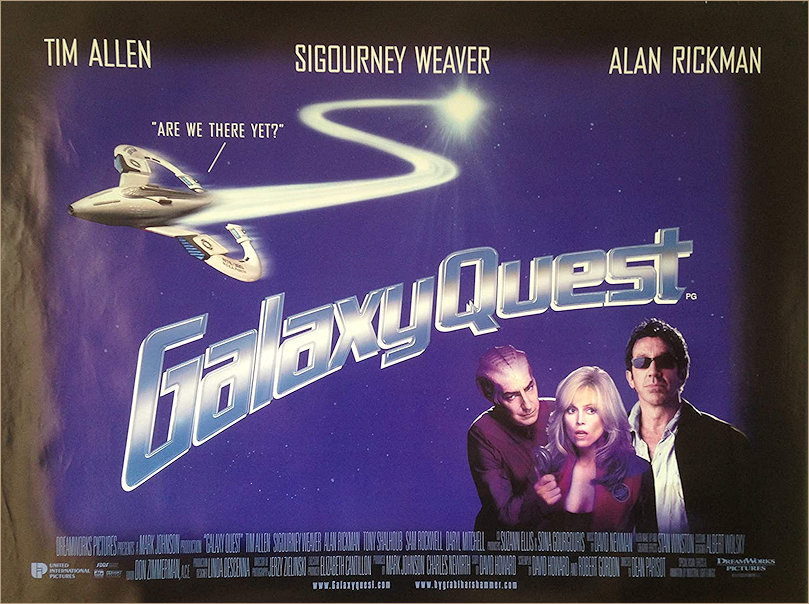
Film Poster for Galaxy Quest featuring the three leads l to r Alan Rickman, Sigourney Weaver and Tim Allen - image sourced from amazon.com



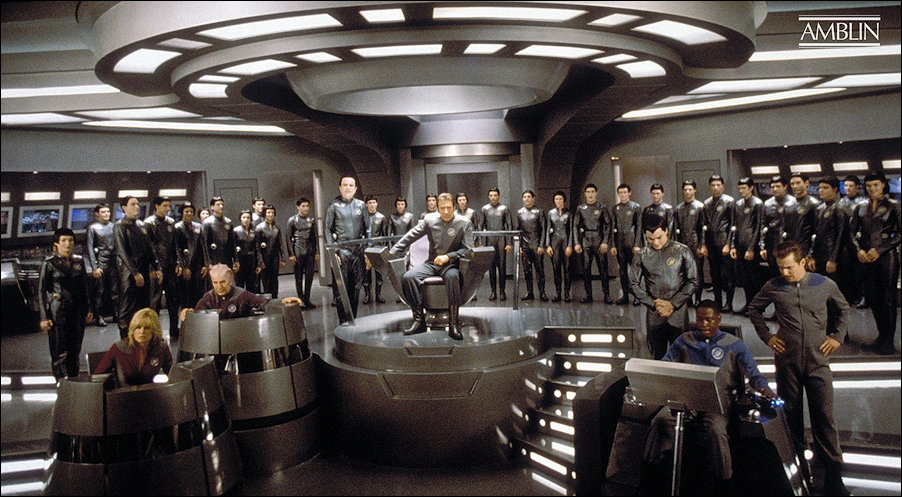
Screenshots courtesy & © of Amblin.com with thanks
As a massive fan of Alan Rickman I'm so pleased that I not only enjoyed the film immensely but that I also witnessed his willingness to play such a unique part!
'The Man in the Iron Mask' - 1998
An amusing and original re-imagining of this famous novel by Alexandre Dumas - a film that is watchable over and over again - featuring four of our favourite actors,
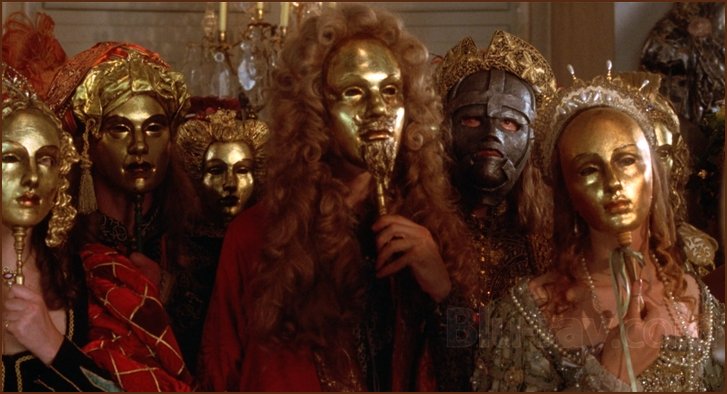
With my interest in mask-making, these are particularly fine examples of the mask-making craftsmanship - the scene also adds some sinister undertones by including the mask which was forced onto one of the hapless twins for most of their adult lives as either Philippe or Louis.
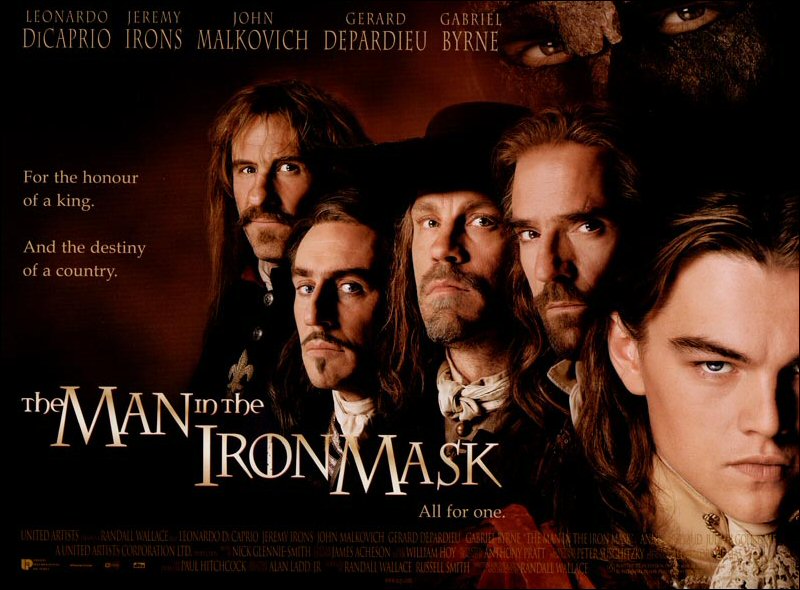
Featuring four of our favourite actors from l to r Gerard Depardieu, Gabriel Byrne, John Malkovich, Jeremy Irons - the eponymous role is portrayed by Leonard diCaprio as both Philippe and his evil twin Louis XIV
'My Fellow Americans' - 1996

Film poster showing the three principal male actors from l to r - Jack Lemmon, Dan Ackroyd and James Garner - missing is the truly magnificent female element - Lauren Bacall!
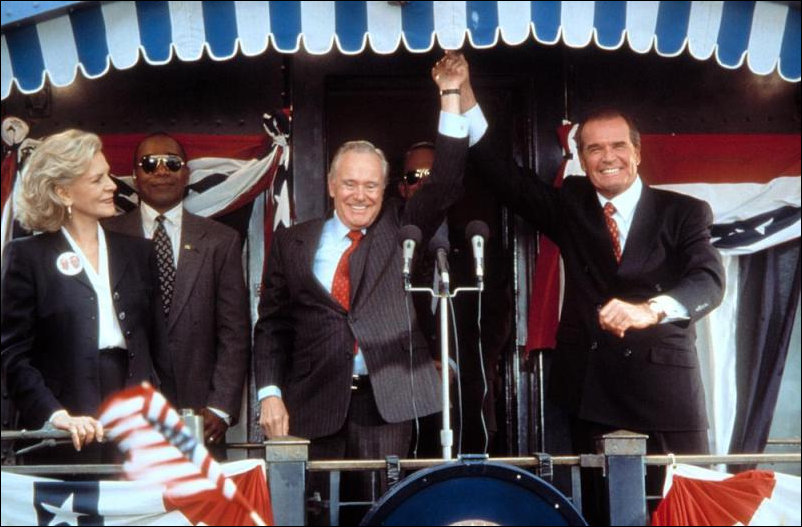
This film would not have been as rich with the absence of Lauren Bacall who by a specific gesture has the last word in this final scene! Image courtesy of Cineplex both images © of Warner Brothers
"Ex-presidents Kramer (Jack Lemmon) and Douglas (James Garner) have hated each other for years. But when the current administration of President Haney (Dan Aykroyd) -- Kramer's former vice president -- tries blaming a string of kickbacks from a defense contractor on the two former presidents, they band together. With Haney's goons trying to kill them, they set out across the country to try and clear their reputations. In the process, they see a side of America they never knew before. IMDB ref."
That's the official write-up! As far as we are concerned this is one of the funniest movies we have ever seen with a stellar cast! We have no idea how we missed the cinema experience, but have now viewed and laughed over this film on more than several occasions - time for another view methinks!
'Mississippi Burning' - 1988
An incredibly powerful film based (loosely apparently) on actual incidents, having just seen the highly acclaimed 'Detroit' i have to say, hand on heart, Mississippi Burning moved me more than a foulmouthed modern film trying its best and failing miserably to portray the horrors of discrimination and blind prejudice and hatred.

Incredibly atmospheric poster for Mississippi Burning - image sourced from cine-songes.com
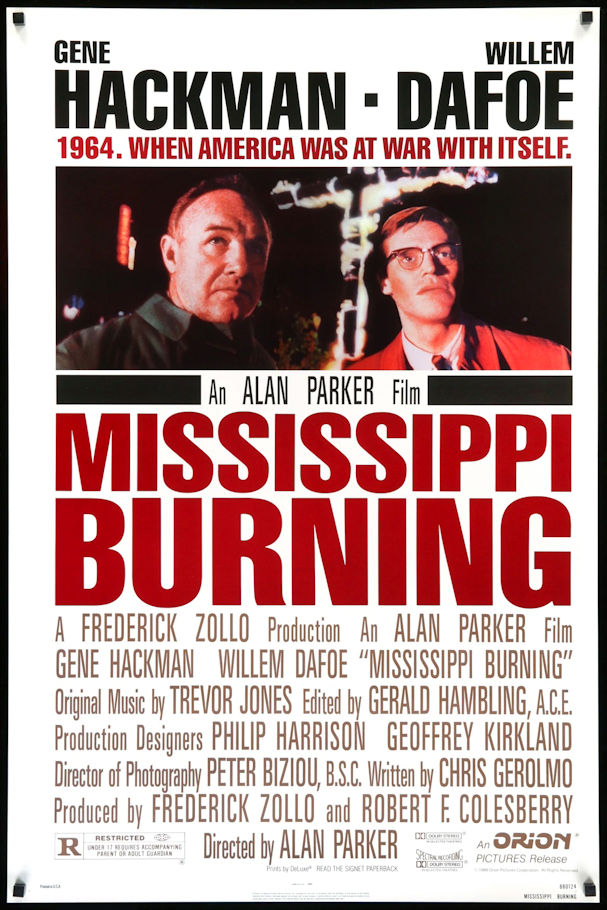
An Alan Parker Film starring two greats of the cinema - image sourced from originalfilmart.com
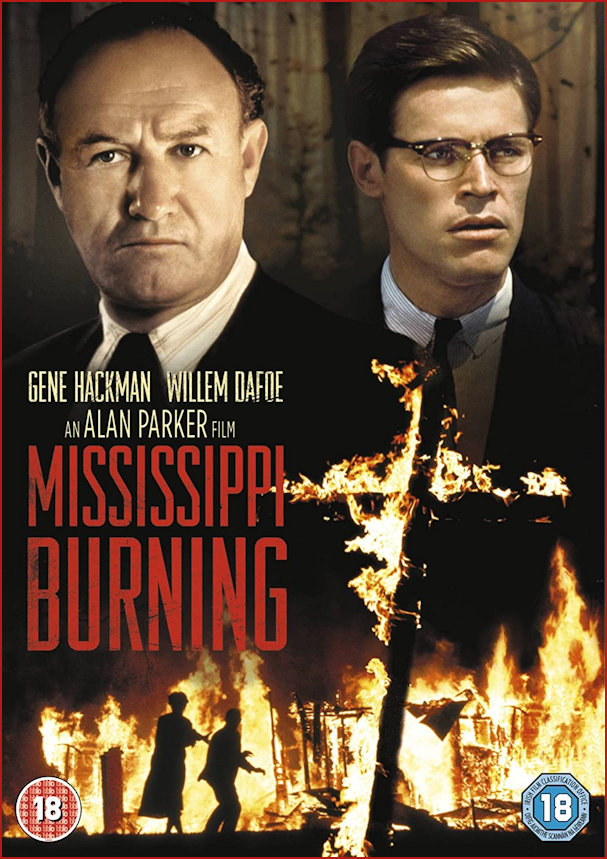
Mississippi really is burning in this film poster - image sourced from Amazon.co.uk
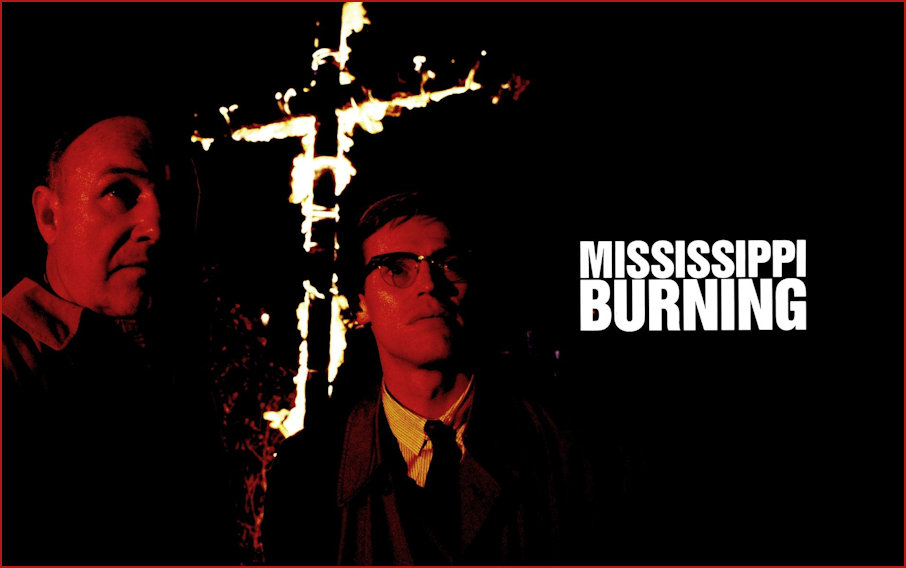
The starkness of this film poster says it all - image sourced from screenfish.net
Mississippi Burning: a civil rights story of good intentions and suspect politics
Willem Dafoe and Gene Hackman star as FBI agents who crack a 1964 conspiracy of racist murderers – without any help from the activists who played such a vital role at this time
On 21 June 1964, one black and two white civil rights activists disappeared near Philadelphia, Mississippi. The FBI codenamed the case MIBURN – short for Mississippi Burning.
Crime
The three activists – in real life, James Chaney, Andrew Goodman and Michael Schwerner, though they are not named in the film – are driving, tailed by several cars. When they stop, they are murdered and their bodies hidden by a mob of white men connected to the Ku Klux Klan. Later, the FBI turn up, in the fictionalised forms of spiky white liberal intellectual Agent Ward (Willem Dafoe) and rough-around-the-edges white liberal anti-intellectual Agent Anderson (Gene Hackman). Viewers may erroneously conclude that the FBI in 1964 was the vanguard of liberalism, though there is a brief reference to the rather less progressive views of its director J Edgar Hoover. Anderson and Ward are based approximately on real FBI agents John Proctor and Joseph Sullivan.
Civil rights
Ward escalates the investigation with agents from Washington. "You'll start a war," Anderson warns him. "It was a war long before we got here," Ward snaps back. This, along with a nod to the story of James Meredith, is about as far as the film gets towards contextualisation. On release, it was criticised by civil rights figures including Coretta Scott King for largely ignoring the role of black and white activists. One figure who could have been in the movie (and isn't) was Mrs King's husband, Martin Luther King Jr. He visited Philadelphia a month after the disappearances, and declared: "This is a terrible town. The worst I've seen. There is a complete reign of terror here."
Racism
Though Mississippi Burning depicts many appalling (and broadly accurate) incidents of racist violence, its narrative focus is on what race politics meant to white people. Most of the black characters in the film are passive, with two notable exceptions. First, the screenplay puts a few aspirations to freedom in the mouth of an angelic young boy, perhaps hoping that the fact he is a child will render anything that sounds like a demand less threatening to any jittery white people in the audience. Second, it creates a flip side to the innocent black child: the scary black monster. Badass FBI Agent Monk (Badja Djola) kidnaps the town's racist mayor and threatens to chop his privates off with a razor blade if he doesn't give up the guilty men. Monk is pretty implausible, though there were such things as black FBI agents in 1964: the first was appointed in 1919. Real-life mafioso and FBI informant Gregory Scarpa (who was of white Italian heritage) claimed to have fulfilled a role similar to Monk's, though historians of the case generally take that with a substantial pinch of salt. Clearly, Mississippi Burning has good intentions when it comes to portraying the history of race politics. Even so, with Monk and the boy as its only substantial black characters, it can't help echoing Rudyard Kipling's description of conquered peoples as "half-devil and half-child" – hinting that, deep down, it isn't immune from some rum old ideas itself.
Investigation
In the film, Mrs Pell (Frances McDormand), wife of sheriff's deputy and lynch mob leader Clinton Pell (Brad Dourif), reveals a police conspiracy. This leads Anderson and Ward to another of the guilty men, who they soon intimidate into a confession. All of these characters are fictional. In place of Mrs Pell, there was a "Mr X", who has subsequently been named by journalists as highway patrolman Maynard King. Rather than resorting to the vigilante tactics used by Anderson in the film, the FBI allegedly paid cash for information to crack the case. Seven men (out of 18 accused) were convicted on relatively minor conspiracy charges. The only man convicted of the manslaughter of the three activists was Edgar Ray Killen, who was finally prosecuted in 2005.
Verdict
Mississippi Burning is written, acted and filmed with flair, but its history and politics are as murky as a Mississippi swamp. - Source The Guardian
Star Trek IV - 'The Voyage Home' - 1986
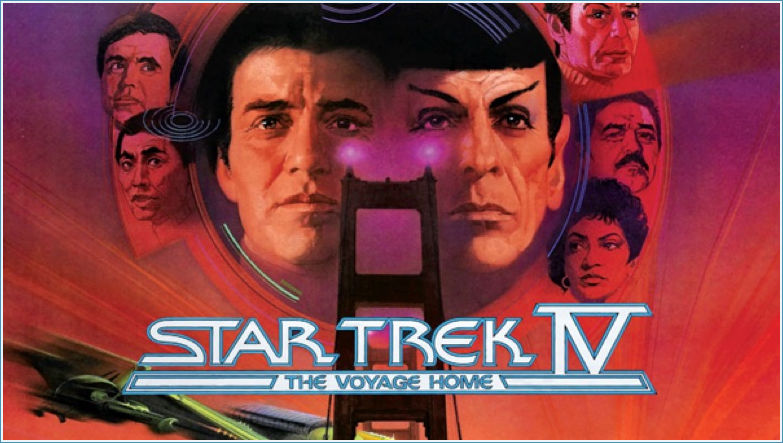
This film features on the Index page within the generic title 'The Star Trek Franchise' or should that be 'phenomenon'? We have been avid fans from the very beginning when the rickety helm (Bridge) appeared on our television screens and Mr. Spock didn't look too much like an alien except for his extraordinary eyebrows and pointy ears, the girls wore extremely short dresses which didn't have boots (as in the Super Hero franchise) to make them look more demure, you saw a lot of leg! We experienced a positive type of early political correctness and embraced the sterility and clutter-free existence of the spaceship which was our home as well as the living quarters of the crew. We also accepted smooth-browed Klingons who were terrified of the cutsie 'Tribbles'. There was a little resistance (by my husband not by myself) to 'The Next Generation' and much of what is mentioned above became more refined including the ditching of the short little dresses and replacing them with catsuits that had cleavages and were so clingy they left nothing to the imagination. We also got Klingons with ridged foreheads and a refusal by 'Worf' to explain how the metamorphosis has occurred (cleverly avoiding the problem of creating a new storyline). We looked forward to the new concept that was announced shortly after the conclusion of TNG - which was set on one of the static space stations were everyone visited for supplies and repairs and even sometimes R&D - this one was called 'Deep Space 9' and had a man of colour as captain - it failed because it was static and to some degree a bit cluttered. The final series reverted back to the pioneering and exploring theme of the original ST series and was captained by a woman, the pc-ness was there but still well balanced and not 'in your face'. If you are unaware of this franchise and wonder how a fourth series could be 'pioneering' without setting the series back, the crew were sent hurtling into the Delta quadrant which had never been explored before and their adventures were based on wanting to return home to the Alpha quadrant. The original formula was the best and that is proved in the Original, TNG and 'Voyager'. A few years later they came up with a prequel called 'Enterprise' and although very cleverly portrayed as the really early days of pioneering and discovering new forms of space travel and sticking rigidly to the timeline with a really excellent cast - the sets were better than the Original! And so to the film, the fourth in a series that would span 11 episodes before being revitalised for a newer audience, which is unique! They all have a feel-good factor but this one excels in that it includes Whales as the stars and how (years before the protests of 2019) the makers of Star Trek were already well aware that we are killing our planet by poisoning natural habitats with plastic, killing species to the point of extinction through carelessness (throwing away a six-pack of plastic rings/yokes which make their way to the sea and kill marine life or strangles wild life on land), by trophy hunting, by removing rainforests for building purposes, by not replenishing what we have utilised from nature and so on! There is a lot of humour in this film right down to using the stolen Klingon ship for the purpose (apparently humans have still not mastered the cloaking device) of once again 'saving the world.' The interaction between a present day human meeting with future humans and all the 'issues' that would normally bring. The interaction of Dr McCoy and present day medicine, of Spock dealing with a particularly nasty specimen 'punk rocker' and the realisation that our world is a filthy, cluttered mess - but where would we be without our 'bibelots' as 'Georgie' put it in 'Mapp and Lucia'. I love the 'Whale Movie' as I call it rather than 'The Voyage Home' which it is not! I love the fact that mankind gets a wake-up call, that future man has to rely on old nuclear technology to revitalise their lithium crystals, I love the way they innocently and inadvertently recreate 'UFO' phenomenon and really stick it to those harpooning whalers - yee ha! Yes, I'm a fan and I tip my hat to the way Gene Roddenberry brought the message to the masses!
'Voyage of the Damned' - 1976
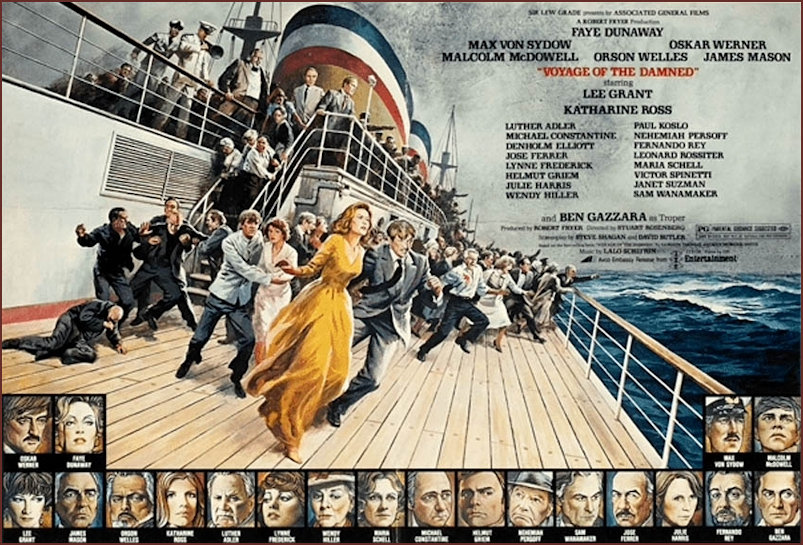
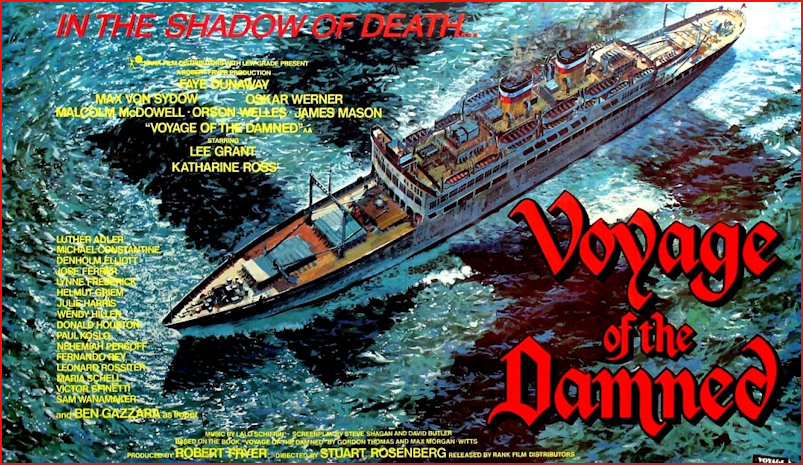
One of the popular 'all-star cast' movies of the 1970s - images sourced from SSMaritime.com
Based on the true story* of a ship carrying German-Jewish refugees which was sent to Havana in 1939 by the Nazis but was denied permission to land anywhere. The ship was eventually obliged to return to Germany, where certain death awaited its passengers. This terrible outcome had been cynically anticipated by the Nazis when granting permission for the voyage in the first place. Source : Google
* Key Facts - Source : ushmm.org
- After the St. Louis arrived in Havana, the passengers learned that the Cuban government had canceled their landing permits. The American Jewish Joint Distribution Committee (JDC) negotiated with Cuba on behalf of the passengers, but the negotiations failed and the Cuban government forced the ship to leave the harbor.
- Although the ship sailed near the Florida coast, the US government did not allow the passengers to land, since they did not have US immigration visas and had not passed a security screening. American newspapers publicized the saga and many Americans sympathized with the passengers.
- Great Britain, France, Belgium, and the Netherlands each admitted a percentage of the passengers upon their return to Europe in June 1939. Many passengers were able to obtain immigration visas and leave for the United States before the German invasion of western Europe in May 1940, but 254 passengers were killed in the Holocaust. Read more
The ship used in the film is then MV Irpinia which had a narrow escape when film producers showed an interest in using her for the film. "In 1976 the company (Grimaldi Siosa Lines) decided to withdraw the Irpinia from service, considering she was already an amazing 47-years of age and were planning to sell her to the breakers. However before she could be sold, something astounding occurred; for ‘Grimaldi Sicula Oceanica’ was contacted by “Associated General Films” who intended to make a ‘Lew Grade’ movie entitled the ‘Voyage of the Damned,” and they required a suitable older style liner and the 1929 built M/v Irpinia was perfect. Thus they chartered her for the making of this major movie event, which had a massive cast of some of the finest and best-known actors of that time! Source : SSMaritime.com
'Picnic at Hanging Rock' - 1975
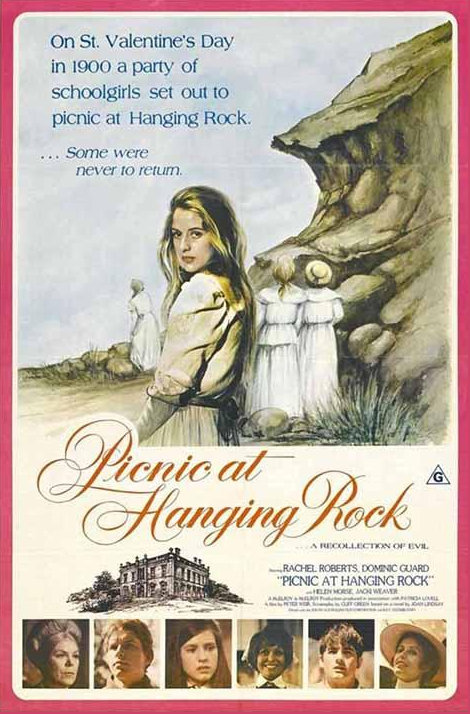
Original Australian poster 1975 - IMDB

UK poster painted in gouache by Brian Bysouth 1975, designer of UK posters for several Bond films, the Herbie series and Raiders of the Lost Ark - images and original information courtesy of picnicathangingrockofficial.com
'The Odessa File' - 1974
First there was the book ...
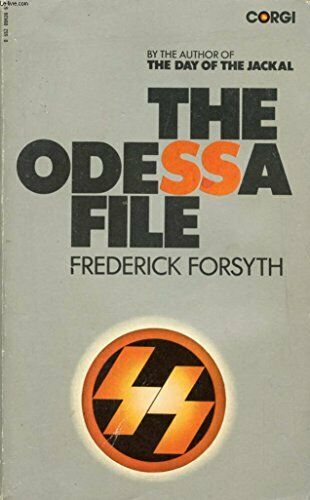
... and then came the Film ...
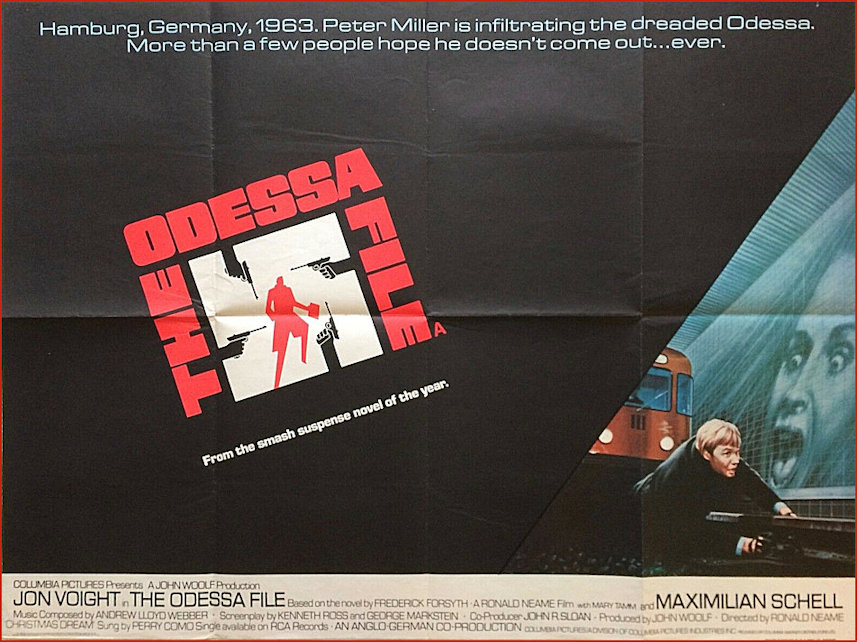
Image sourced from and as seen on ebay
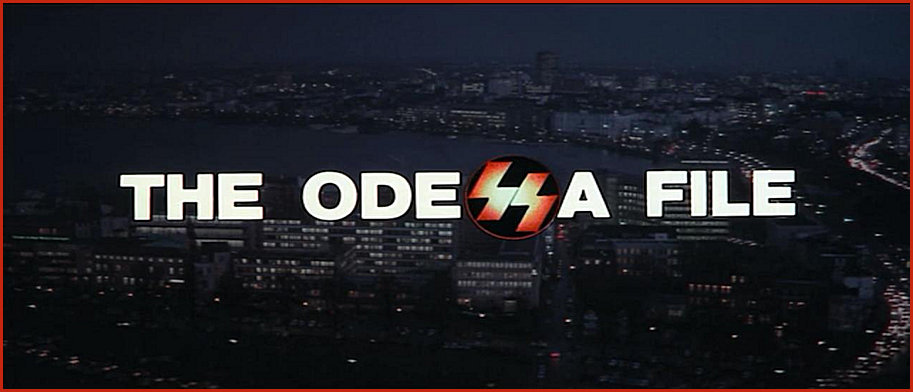
Image sourced from IMDB via Amazon
'Cabaret' - 1972
Based in the Christopher Isherwood play this is a very dark portrayal of the events leading up to the Nazi overthrow of Germany and the insidious means by which they accomplished this. Seen through the louche eyes of the leading characters this makes for compelling viewing! Liza Minnelli excels as the nightclub singer whose eyes are slowly but surely opened to the atrocities surrounding her but who eschews them and escapes to a less hostile environment while she is privileged to do so as an American.

Poster with early Nazi overtones visible in the background - image sourced from impawards.com
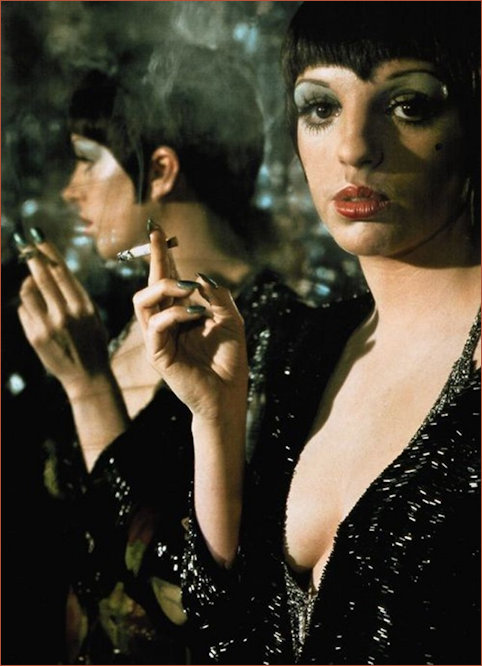
Truly 'Divine Decadence' - image sourced from anothermag.com
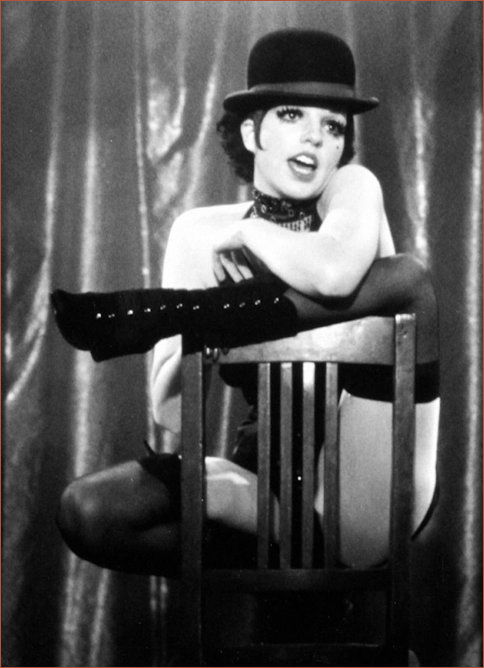
The 'Chair' pose - image sourced from Pinterest
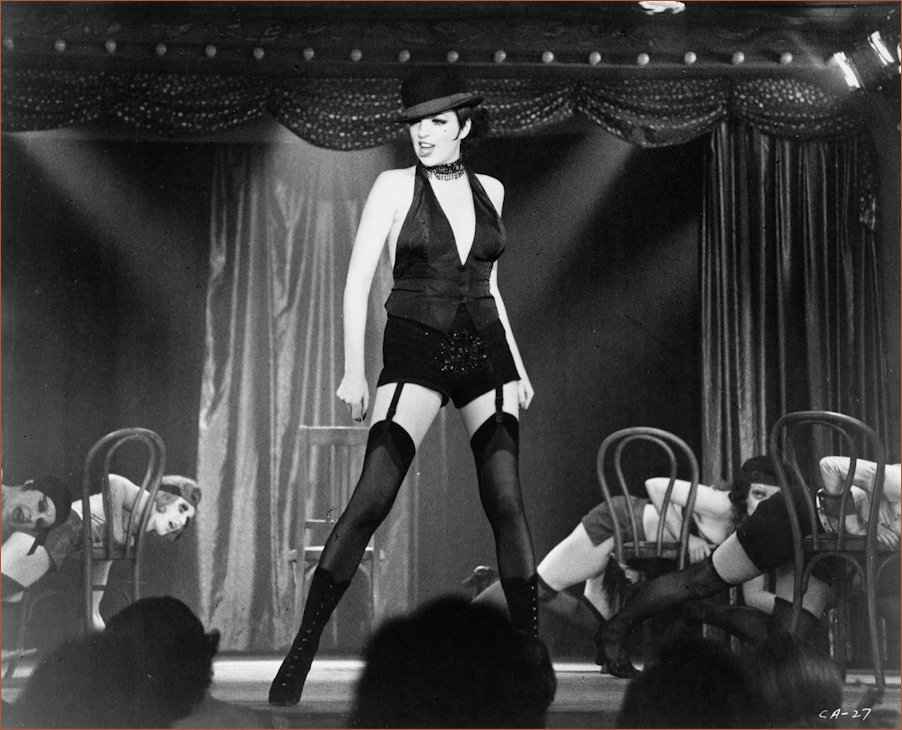
Sally Bowles in full dominatrix flow! - image sourced from 4columns.org
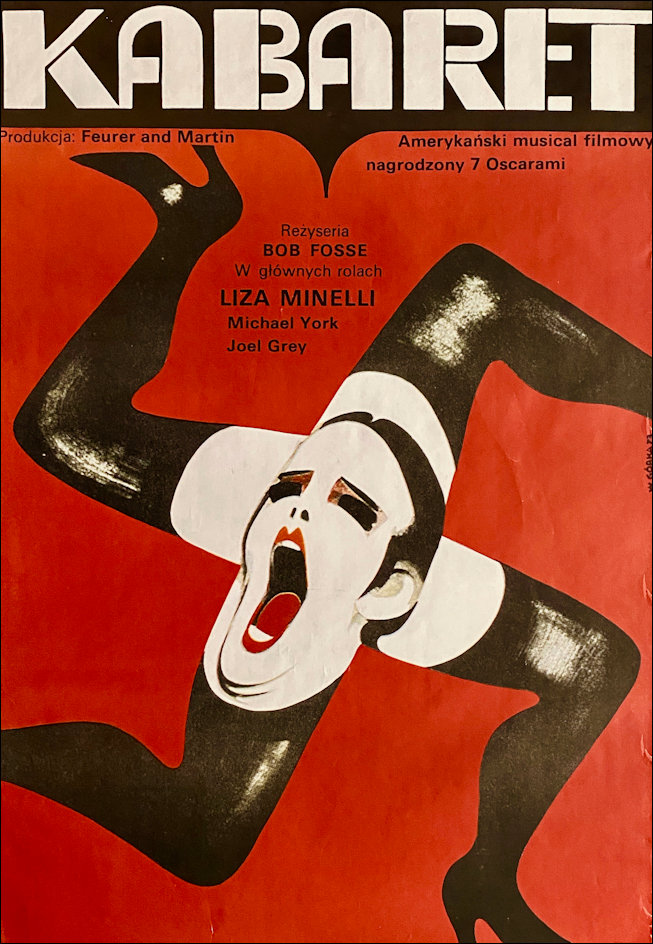
This astonishing offering from Poland - image sourced from vintagemovieposters.co.uk
"Come to the Cabaret…A divinely decadent experience !"
A marvellous 'different' Polish one-sheet film poster with Wiktor Gorka artwork that is unique to Polish cinemas for Bob Fosse's Oscar winning masterpiece "Cabaret". Much more than a musical and more of a political statement "Cabaret" has established itself as one of the greatest choreographed musicals of all time with Liza Minnelli's portrayal of nightclub singer Sally Bowles winning her the Best Actress Oscar. One of eight Academy Awards scooped by the film. This beautiful, rolled (as issued) example is from the 1990's Polish re-release that retains Gorka's iconic imagery from earlier first release. It displays very well with minimal handling & age wear. The red background is deep and unfaded and the central colours of the four-legged illustration vibrant. A very scarce and hard to find film poster which represents a truly desirable item of original Eastern European 'alternative' collectable film movie memorabilia.
Cabaret Movie Poster
"In Berlin in 1931, American cabaret singer Sally Bowles meets British academic Brian Roberts, who is finishing his university studies. Despite Brian's confusion over his sexuality, the pair become lovers, but the arrival of the wealthy and decadent playboy Maximilian von Heune complicates matters for them both. This love triangle plays out against the rise of the Nazi party and the collapse of the Weimar Republic."
"Cabaret" was released with the tagline "A Divinely Decadent Experience" – Bob Fosse's film retains its power to shock nearly fifty years after its original release. Beautifully filmed, with a brilliant use of intercuts between the musical songs and scenes of sickening violence in the Berlin of the early 1930s, the film provides an object-lesson in how a musical in film should work, with the songs commenting on as well as advancing the plot. Liza Minnelli is quite simply the definitive Sally Bowles, combining boundless self-confidence with an innate vulnerability. She shows a mastery of tone and shade in her rendition of some of the tunes – in the title song, for instance, she recalls her mother at her best, whereas in the song "Maybe This Time," she reveals the character's inner yearning for a better life. Likewise Joel Grey is definitive as the Emcee – a vicious parodist who knows precisely what the songs mean in terms of satirizing Germany at the beginning of Nazi rule. Michael York's "Brian Roberts" (actually Christopher Isherwood) is both bemused yet appalled at what happens around him; he can never become actively involved either in the anti-Nazi movement or the decadent world of the Kit-Kat Club due to his respectable upbringing. He can escape from Nazi Germany; sadly neither Sally nor the Emcee have that privilege. This is the film's principal tragedy. Source : vintagemovieposters.co.uk
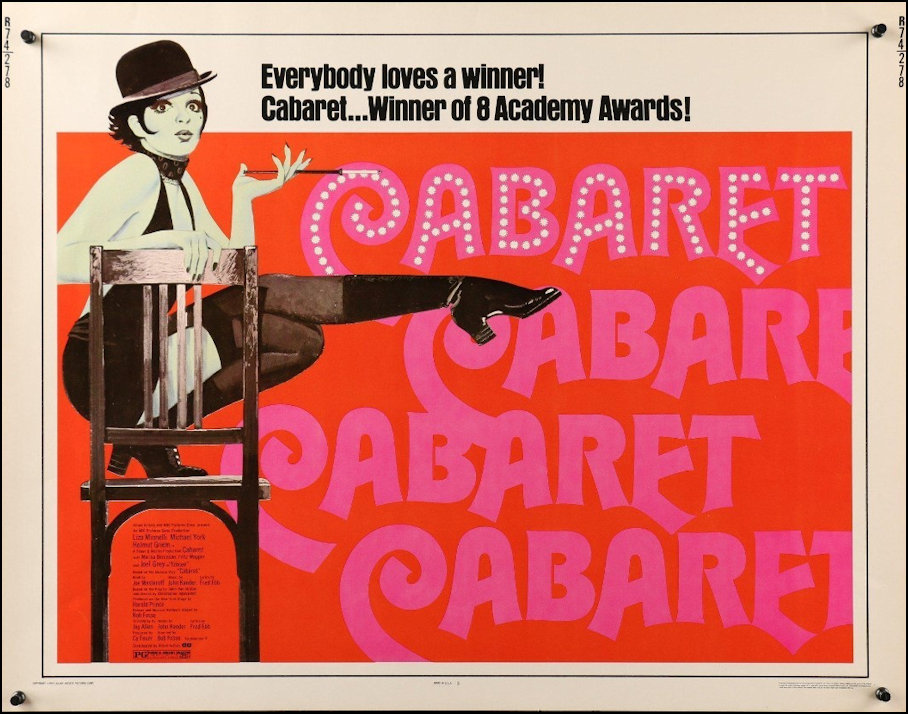
Image sourced from filmartgallery.com with thanks
'M*A*S*H' - 1972
The original version starring Donald Sutherland, Elliott Gould, Tom Skerritt and Sally Kellerman as the magnificent 'Hot Lips' IMDB
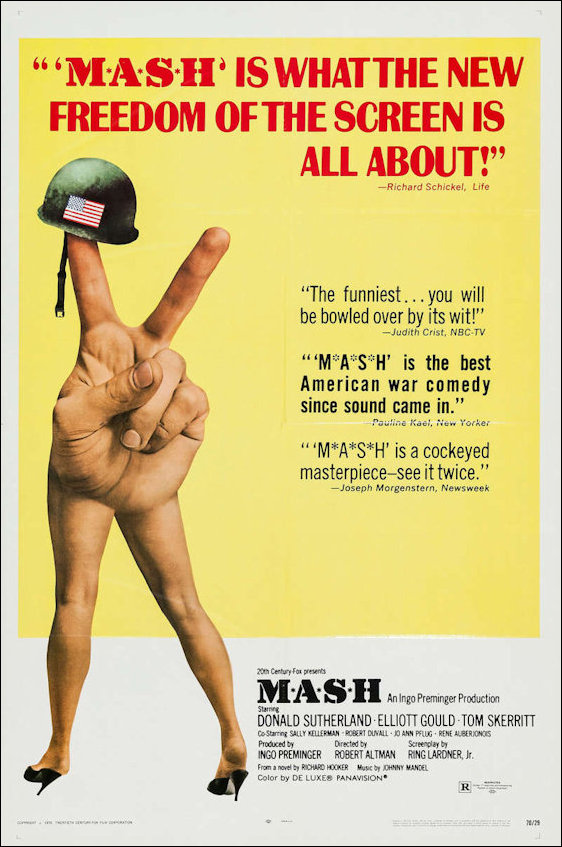
'The Producers' - 1967
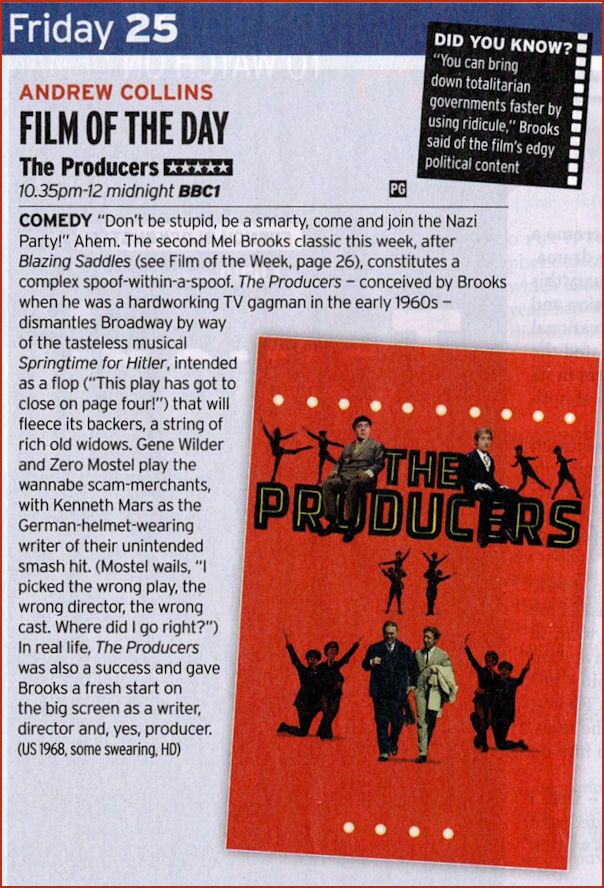
The original Producers film as advertised in the Radio Times 19th-25th June 2021
'A Man for all Seasons' - 1966
Whenever I notice that this film is on television I will dip in to watch it even if it has already started! It is a stellar performance by Paul Schofield, probably better known for his theatrical performances, of a man who not only attained sainthood ( I was married in a church dedicated to him) but must also be acknowledged as a martyr. Paul Schofield give him exactly the sort of gravitas that his life history demanded! It is also an accurate portrayal of the historic turmoil of the time and is dealt with in a sympathetic manner without omitting any barbarity of the time.
It seems, once the film had won the 'Best Picture' Oscar, Hollywood went into over drive and gave us a wonderful selection (not all shown) of the film posters advertising its success.
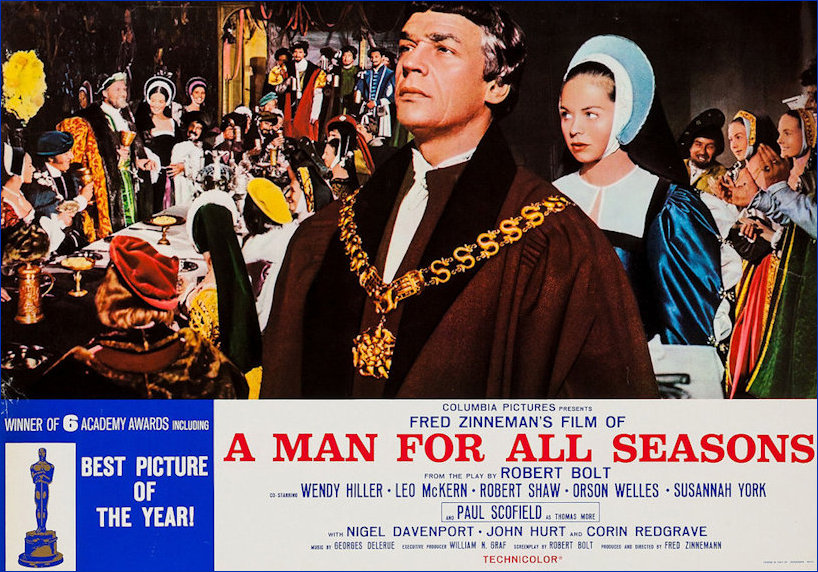
Paul Scofield as Thomas More and Susannah York as his daughter Margaret (Meg) Roper as portrayed in the heady and successful days when Thomas More was fêted at court and close to Henry VIII

Susannah York as Margaret (Meg) Roper, Robert Shaw as Henry VIII and Paul Scofield as Thomas More as portrayed in the heady and successful days when Henry VIII felt able to call in unexpectedly at his good friends house complete with a full entourage of courtiers.

Paul Scofield as Thomas More and Orson Welles as Cardinal Wolsey as portrayed at the time when the persecution begins
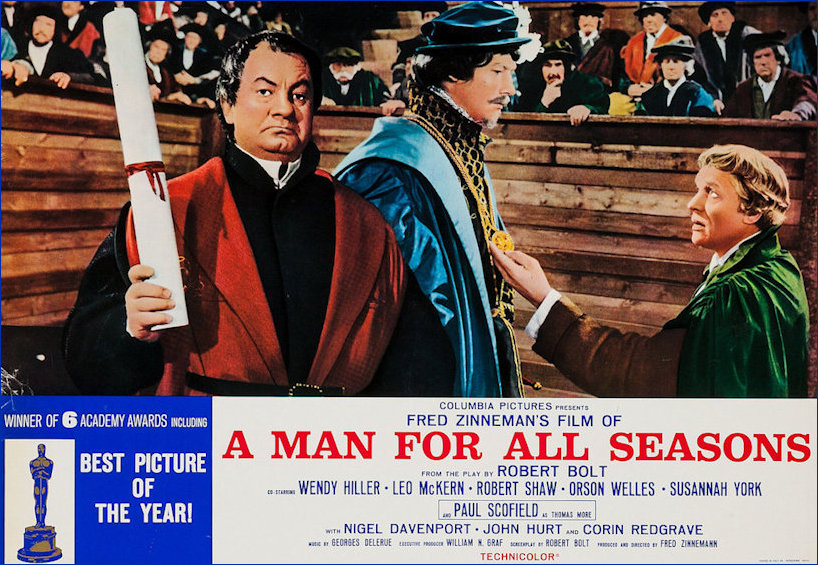
Leo McKern as Thomas Cromwell, John Hurt as Richard Rich and Paul Scofield as Thomas More as portrayed in a court scene when Thomas More is denounced by his protégée.
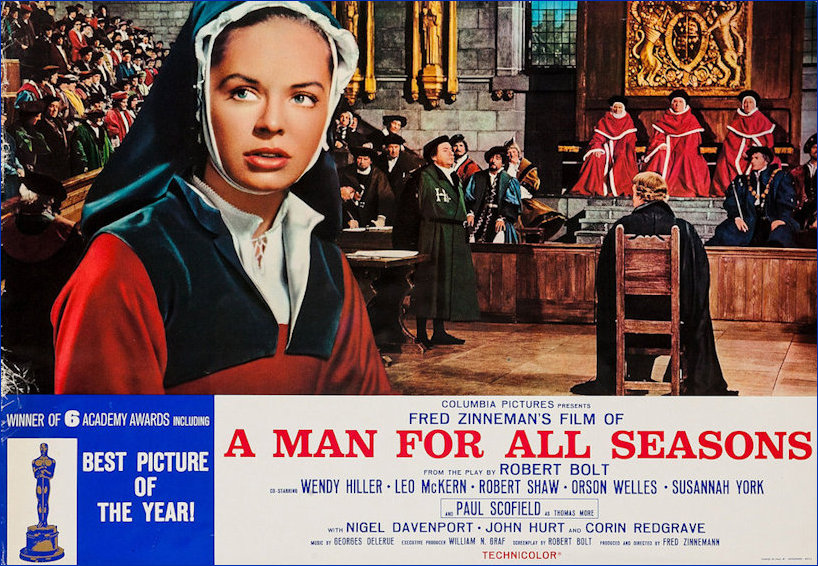
Susannah York as Margaret (Meg) Roper witnessing the interrogation of her father by Thomas Cromwell and the verdict of the Peers of the Realm

I just like this vibrant image which may have been produced for a DVD release - shame Susannah York has been marginalised and no sign of Cromwell and Rich, all of whom played such pivotal parts historically and in the film.
'The Raven' - 1963
Starring Boris Karloff, Vincent Price and my personal favourite Peter Lorre.
Three supremely silly Wizards trying to out-magick each other. At one point Karloff attempts to murder Price and knocks him out - as he comes to Price delivers one of the most magic moments of cinema history "What place is this?" - it's pure knockabout comedy!

Vincent Price, Peter Lorre and Boris Karloff
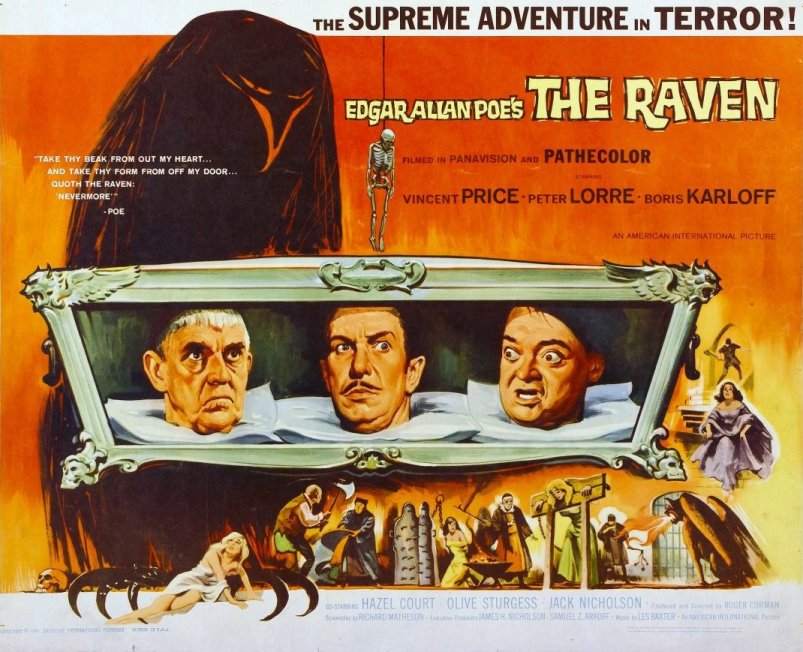
They say that the battle between Merlin and Madam Mim in Disney animation, 'The Sword in the Stone', is based on this film and the battle between the sorcerers!
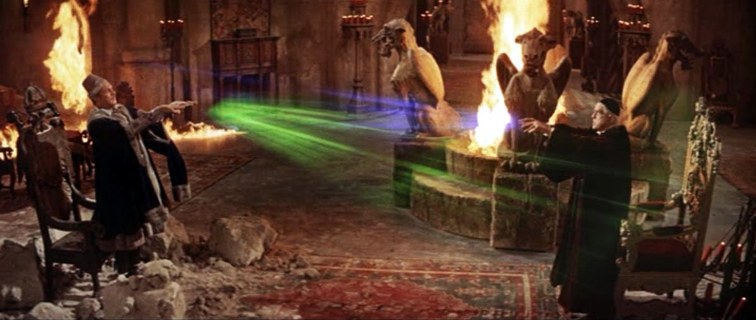
Vincent Price and Boris Karloff hurling magick at each other - a precursor to Disney's Cartoon Witches and Wizards!
Poster for the film which does not hint at the 'magick' battle that will take place between Merlin and Mim!

Mim cheats from the outset!
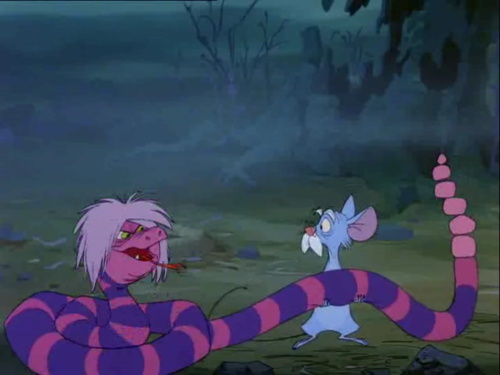
Disney has Merlin and Madam Mim morphing into animal, mineral and vegetable just like the originals in 'The Raven'.
'The Loneliness of the Long Distance Runner' - 1962
Once again the book came first!
A first edition of 'The Loneliness of the Long-Distance Runner by Alan Sillitoe from which came a gritty black and white film - image sourced from rookebooks.com who also provided the following summary : 'A first edition of this collection of short stories from Alan Sillitoe. In The Loneliness of the Long Distance Runner, the story focuses on Smith, a poor Nottingham teenager from a dismal home in a working class area, who has bleak prospects in life and few interests beyond petty crime. The boy turns to long-distance running as a method of both an emotional and a physical escape from his situation.'
The Film
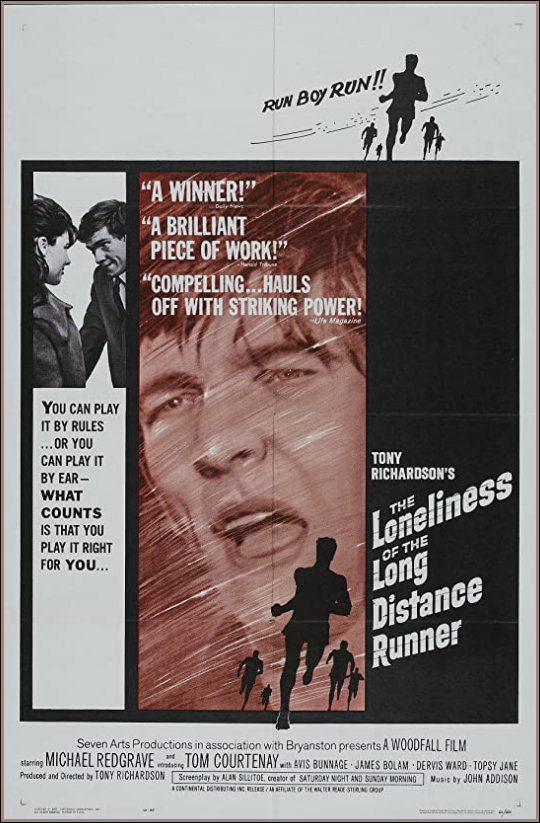
Film Poster for the adaptation of 'The Loneliness of the Long Distance Runner' - image sourced from IMDB
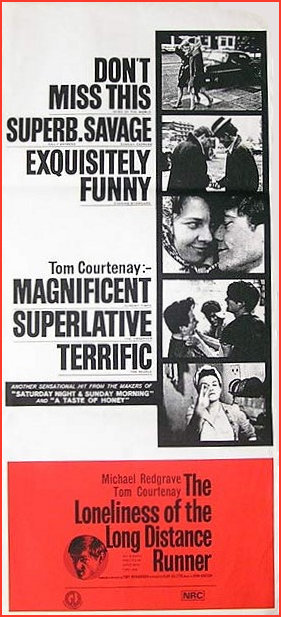
An Australian variation of the film poster - image sourced from moviemem.com
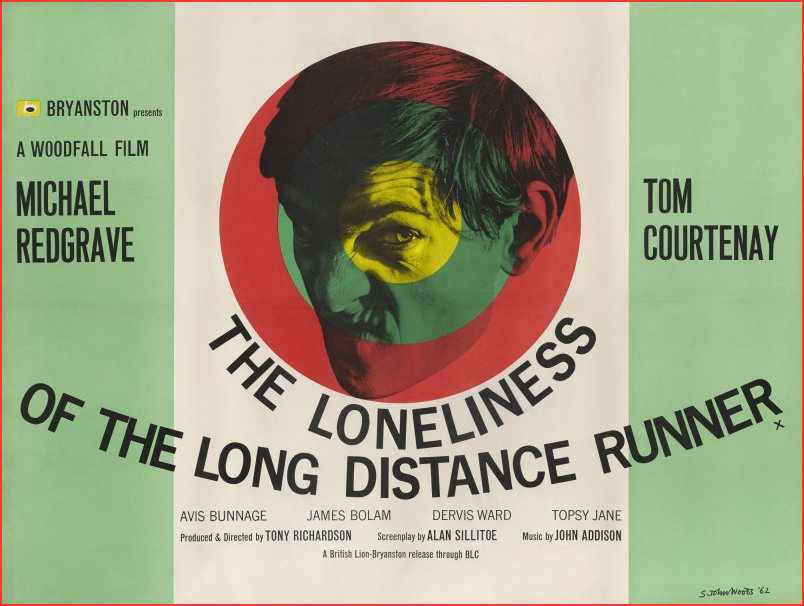
This image of an alternative film poster was auctioned off by Sotheby's giving no interesting information about its provenance
I'm not sure I remember reading the book although I must have done at some stage as I have read all of Alan Sillitoe's novels as far as I know. I was interested in finding the images for the 1st edition (I wasn't interested in first editions in the 1960s) as at the start of this section. As to the film, I have seen it over and over again, it is compelling viewing especially now looking at the cast and seeing how many of them I had either worked with or got to appreciate their performances in the world of film, television and theatre. One of my greater reasons is of course because Tom Courtenay is the star and I think I can say, hand on heart, I have never missed any of his films, live theatre or television appearances. Yes he was a disappointment when I did finally meet him, but there's something to be said for loyalty and I've always been loyal to him! Returning to the film, it tells the tortuous story of an adolescent growing up in what is euphemistically these days called 'a broken home'. None of the brutality of his existence is veiled over nor the struggle to exist and the greed that follows the payout of his late father's 'life policy'. The dream of the escape is thwarted and he becomes all but institutionalised in his new home, the local Borstal. His final hammer blow is the failure to win a race ... all privileges rescinded and so the pattern of his future is mapped out forever with no hope. There are still areas of Nottingham that carry on this sad and dreary tradition, the 2020 'Banksy' portrays it all.
'To Kill a Mockingbird' - 1962
I's already seen this film before reading the book, but seeing it again after reading the book made me appreciate it so much more - this is a superb portrayal of racial hatred and how one man's sure footed demeanour amongst his peers and neighbours overcame the hell of what is racial discrimination. A man who brought up his own (motherless) children to understand but to abhor any form of racism - but the action takes place on the eve of WWII and all those horrors that were yet to come and which were already evident in the book. This was a very sympathetic and accurate portrayal of the book in film form and I am not a great fan of screen adaptations of books as they change or omit important issues to suit audiences.
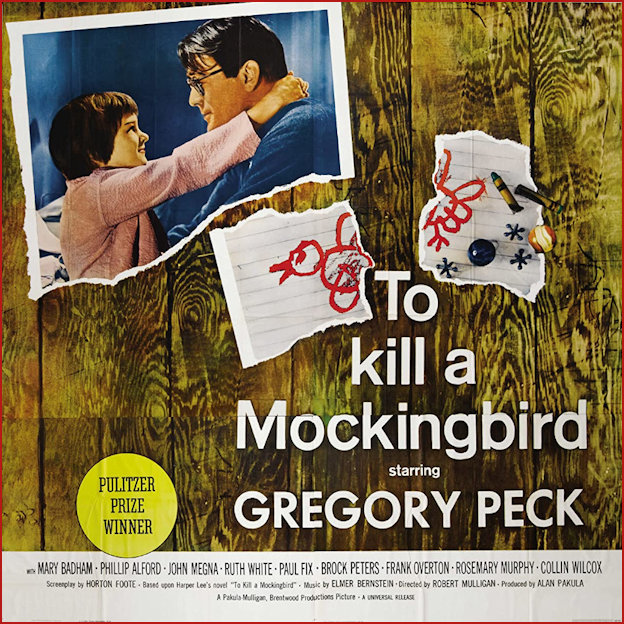
'Scout and Atticus' share a hug amidst the fury of racism - poster image sourced from IMDB
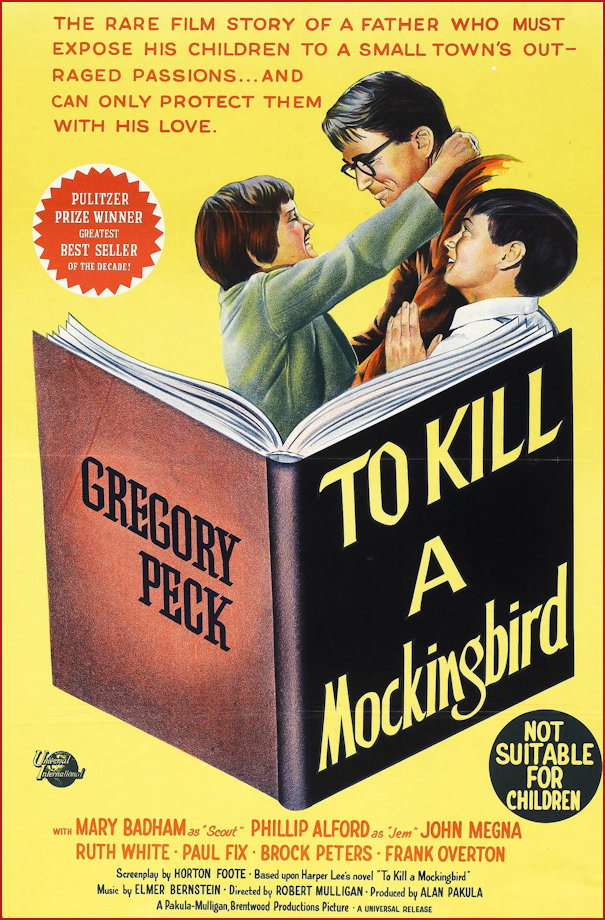
'Not suitable for children' and yet, this is a story about children experiencing the maelstrom that is racism - image sourced from IMDB
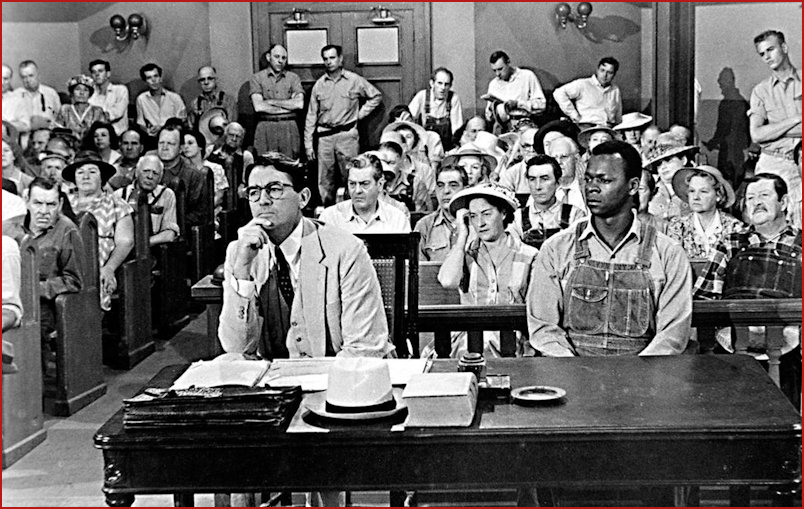
Packed in like sardines in a very full court - image sourced from the Inquirer
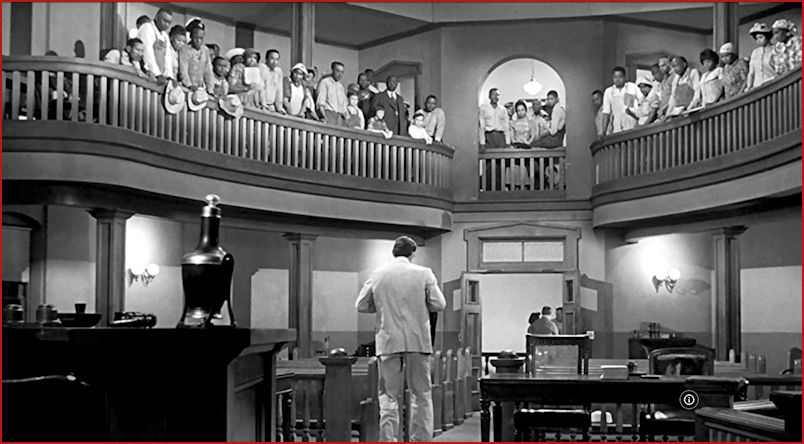
This is a court case concerning a black member of society but his supporters are all banished to the balcony - image still sourced from IMDB
Although the following refers to the potential banning of the book in schools, the same could apply at any time to the film :
Why 'To Kill a Mockingbird' should be required reading, not banned | Jackson
Posted: October 18th, 2017 - 12:30 PM by Harold Jackson
Harold Jackson | hjackson@phillynews.com
News that a Mississippi school district has banned To Kill a Mockingbird was both amusing and concerning. Amusing, because school districts have been banning the novel that takes on racial prejudice ever since it was published in 1960. Concerning, because the need for young people to read this book is just as compelling as it was nearly 60 years ago. Mockingbird is on the Library of Congress list of America's most banned or challenged books, along with The Adventures of Huckleberry Finn, Mark Twain, 1884; Sexual Behavior in the Human Male, Alfred C. Kinsey, 1948; The Catcher in the Rye, J.D. Salinger, 1951; The Autobiography of Malcolm X, Malcolm X and Alex Haley, 1965; and The Words of Cesar Chavez, Cesar Chavez, 2002.
The Biloxi, Miss., school district that banned Mockingbird didn't give an official reason, but a school board member said: "There were some complaints about it. There is some language in the book that makes people uncomfortable, and we can teach the same lesson with other books." That's a shame. Making people feel "uncomfortable" is never a good reason not to talk about a subject that isn't talked about enough. The book, according to the school district's website, was being read in an eighth-grade language arts class to teach adolescents that caring for others should not be dependent on race or education. That's a good lesson for young people across America. But it has additional resonance in Biloxi, which is where Confederate President Jefferson Davis built Beauvoir, the mansion he made his home after the Civil War. I visited Beauvoir in 1994 while on an assignment for the Baltimore Sun, all the time thinking the traitorous Davis' postwar home should have been a federal prison. My oldest brother, Anthony, was stationed in Biloxi while in the Air Force in the 1960s. He said he and other black airmen and soldiers were cautioned against going downtown because of racism. I made it a point when I was in Biloxi 30 years later to have a meal at the finest white-tablecloth restaurant in town. As I recall, both the steak and the service were excellent. I thought Biloxi had come a long way. But today, Biloxi middle-school students are deemed too squeamish to read a book about racism. The word nigger is used in Mockingbird, but not in a flippant or incendiary manner. Atticus Finch, the white lawyer who defends a black man accused of raping a white woman, explains to his young daughter why people were calling him a "nigger-lover." "You aren't really a nigger-lover, then, are you?" Scout asks. "I certainly am. I do my best to love everybody. I'm hard put, sometimes — baby, it's never an insult to be called what somebody thinks is a bad name. It just shows you how poor that person is; it doesn't hurt you."
Lee became frustrated by the frequent banning of her book, and in 1966 wrote a letter to the Richmond News Leader to protest the newspaper's praise of the Hanover County, Va., school district for banning it. Her letter references George Orwell's 1949 novel, 1984, which depicts a land ruled by a government that never means what it says and never says what it means. "Surely it is plain to the simplest intelligence that To Kill a Mockingbird spells out in words of seldom more than two syllables a code of honor and conduct, Christian in its ethic, that is the heritage of all Southerners," said Lee's letter. "To hear that the novel is 'immoral' has made me count the years between now and 1984, for I have yet to come across a better example of doublethink." I hoped to meet Lee at the 50th anniversary of the publication of her Pulitzer Prize-winning book. I was a guest of the Alabama Humanities Foundation at the commemoration, which included an auction of inspirational art at Wynfield Estate, a stately manor near Montgomery. But Lee, long a recluse, played to character and didn't bother to show up. I did have a lovely conversation with Mary Badham, who played Scout to Gregory Peck's Atticus Finch in the Academy Award-winning film based on the book. The movie was released in 1962. Badham, who played only a few other movie and TV roles, seemed almost as much an enigma as Lee, who died last year at age 89. Badham was quiet, reserved, with none of the airs one might expect of a Hollywood actress. Reflecting on that day, and my disappointment in not getting to meet Lee, I can't help thinking that for all the progress this country has made in race relations since she wrote Mockingbird, it hasn't come far enough — and in some respects, it has gone backward. Some literary experts believe Go Set a Watchman, released in 2015 as the long-lost sequel to Mockingbird, was really the first draft of Lee's seminal work, which was finally discovered after being missing for decades. By several accounts, Lee was asked by her publishers to rewrite her first draft from the perspective of a child. That child became Scout, who didn't reveal all the character traits of her father in Mockingbird. That was left to the adult Scout in Watchman. "What would happen if all the Negroes in the South were suddenly given full civil rights?" asked Atticus in Watchman. "Would you want your state governments run by people who don't know how to run 'em?"
It didn't surprise me that the Atticus Finch depicted in Watchman was not without prejudice. After all, the character was supposed to be a white man in 1930s Alabama. Many fans of Mockingbird, however, refused to accept that Atticus had flaws. They didn't want to read anything that destroyed the fantasy they had created. That's where our nation is right now, with too many of us refusing to accept reality. Even when people see grown men kneeling on a football field to protest racism, they refuse to believe that's what they're doing. They dismiss the protesters as unpatriotic flag haters to avoid admitting that the racial prejudice that fuels the football players' demonstrations does exist, and that pride in their country, which they want only to make better, unites the men linking arms. In this twisted version of America where truth too frequently is put on the shelf because it makes people feel uncomfortable, you might be labeled a racist if you insist on bringing the subject up. Instead of using books like Mockingbird to explain to children how racism works, we pretend they haven't already experienced it, in one way or the other. Instead of admitting prejudice exists and confronting it, we find excuses to change the subject. Harper Lee's banned book doesn't let us do that, which is why more people should read it.
Harold Jackson (@harjerjac) is editorial page manager for Philadelphia Media Network.
Posted: October 18, 2017 - 12:30 PM
Harold Jackson | hjackson@phillynews.com
'Some Like it Hot' - 1959
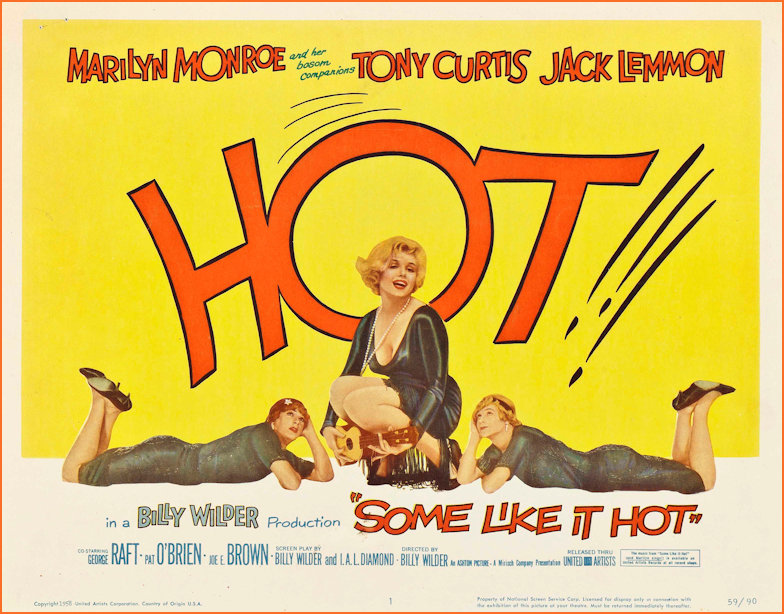
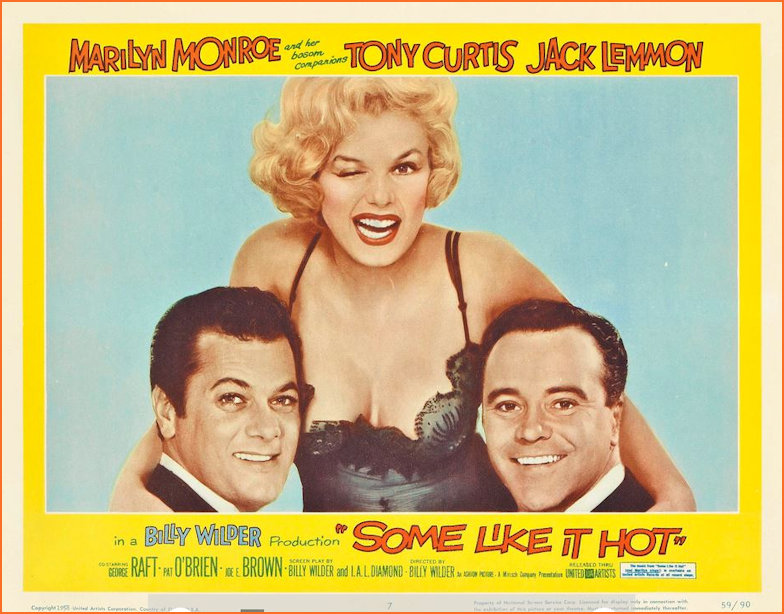
Film Posters / Lobby Cards for 'Some Like it Hot' - images sourced from Christie Auctioneers Lot
Joe, a saxophonist and Jerry, a bassist, are two working-class musicians, playing in a Chicago speakeasy band in February, 1929. Though they have steady work, they still owe money to many of their friends and several of the girls in the chorus line. However, Joe, the optimist, isn't worried since the gig they have seems to be stable. Joe does flirt briefly with the idea of taking all the money he and Jerry have and betting it on a greyhound race but the plan is soon discarded. Fortune changes a few minutes later when a police officer, Mulligan, working on a hot tip from a mob informant, Toothpick Charlie, leads a raid on the place for illegal liquor sales. The speakeasy itself belongs to Chicago's most notorious mob boss, Spats Colombo. Joe and Jerry barely escape the raid. Jobless, they try to figure out a plan to earn money; Joe suggests they hock their overcoats and bet the money on a long shot at the dog racing track. Joe's plan fails miserably and the guys are more broke than ever during a bitterly cold Chicago winter. Joe and Jerry go to the offices of their talent agents, whom have no work for them. They go to the last one, Sig Poliakoff's, where Joe talks to the receptionist, Nellie, whom he has been dating. She tells him that Poliakoff has openings for a sax player and bass player in a band that will be traveling to Florida. In Sig's office, Sig is on the phone frantically trying to find replacement musicians for Sweet Sue, the band's leader, and her assistant, Beinstock. Sue's band is all-female and she has a strict "NO MEN" policy; Sue's frustrated because one of her players got pregnant and another ran off to get engaged. Jerry and Joe, not knowing Sue is looking for women, burst into Sig's office and ask for the gig. Poliakoff informs them that they're the wrong gender, but he does have a gig in Urbana, Illinois, for one night. Joe and Jerry accept and con Nellie into loaning them her car to drive to the gig. Joe and Jerry go to the garage where Nellie's car awaits. The garage happens to belong to Toothpick Charlie and a group of shady-looking men are playing cards in the corner. While the mechanic fills the car with gas, a large limo rolls into the garage and several gang members, armed with shotguns and Thompson machine guns get out. Joe and Jerry hide behind Nellie's car while everyone else is lined up against the wall. The gangsters who burst into the place work for Spats Colombo, who steps from the limo. He has come to Charlie's garage seeking revenge for the bust at his speakeasy. He gives the command and his men slaughter everyone against the wall (a reference to the infamous St. Valentine's Day Massacre perpetrated by Al Capone). The gas nozzle in Nellie's car suddenly pops out when the tank is full and clatters on the ground, drawing the attention of Spats' men, who see Joe and Jerry. Spats orders them to be killed too, while at the same time, Charlie, still alive, tries to reach a nearby phone. Spats grabs a Thompson and brutally finishes Charlie off, temporarily forgetting Joe and Jerry, who escape. One of Spats' goons shoots at them but only succeeds in hitting Jerry's bass. Joe and Jerry, now on the run, call Poliakoff's office, planning to fool their agent into thinking they're the women musicians needed for Sweet Sue's band.
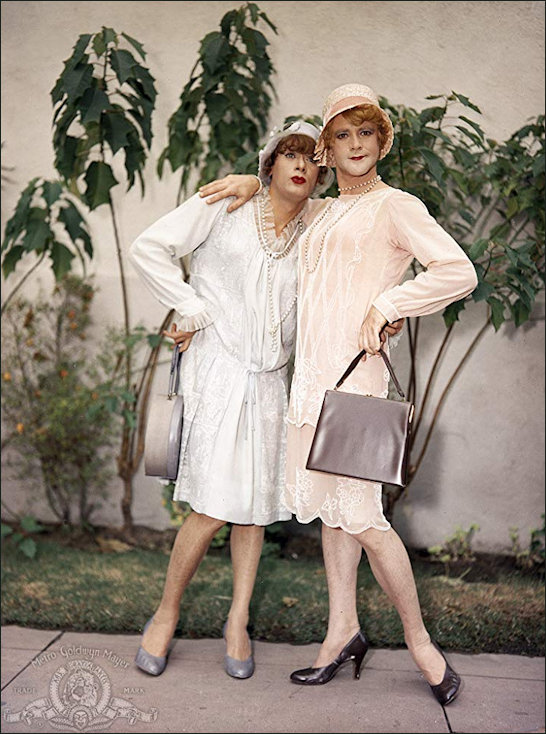
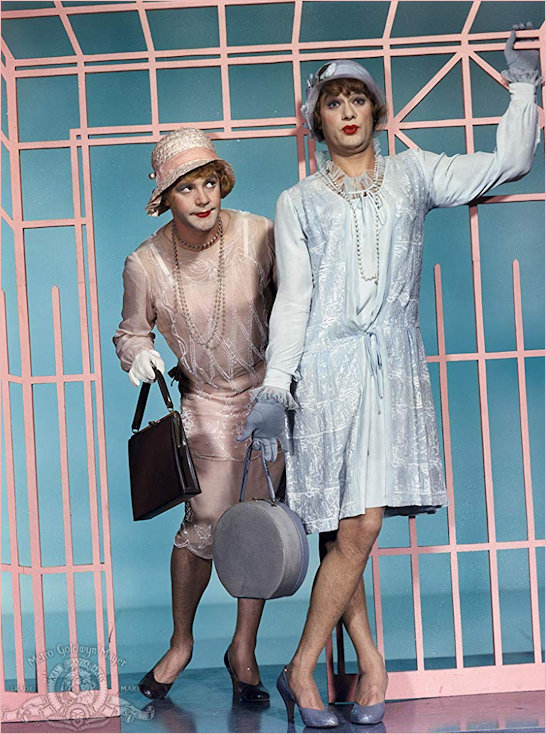
Jack Lemon and Tony Curtis created phenomenally life-like women - a masterpiece of role playing - images sourced from IMDB and really worth preserving as they carry the MGM watermark! Follow the link to view the fabulous gallery of images from this film!
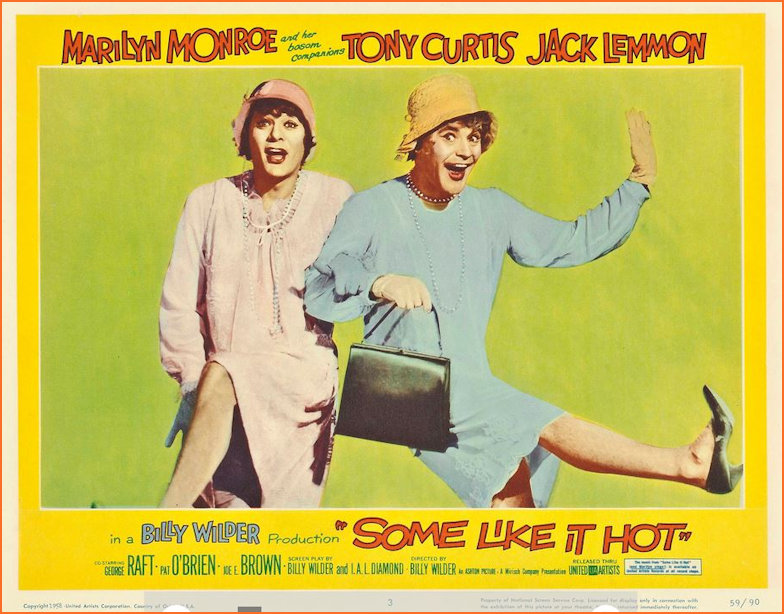
Film Poster / Lobby Card for 'Some Like it Hot' - image sourced from Christie Auctioneers Lot
Joe and Jerry, dressed as women, arrive at the train station. They use false names; Joe becomes Josephine and Jerry becomes Daphne (he'd originally agreed to be Geraldine, but tells Joe he never liked the name). They meet Sue and Beinstock and fool them effectively enough to be hired. They also spot the band's singer and ukulele player, the attractive and blond Sugar Kowalczyk, who goes by "Sugar Kane." Both men are instantly attracted to her, especially Joe.
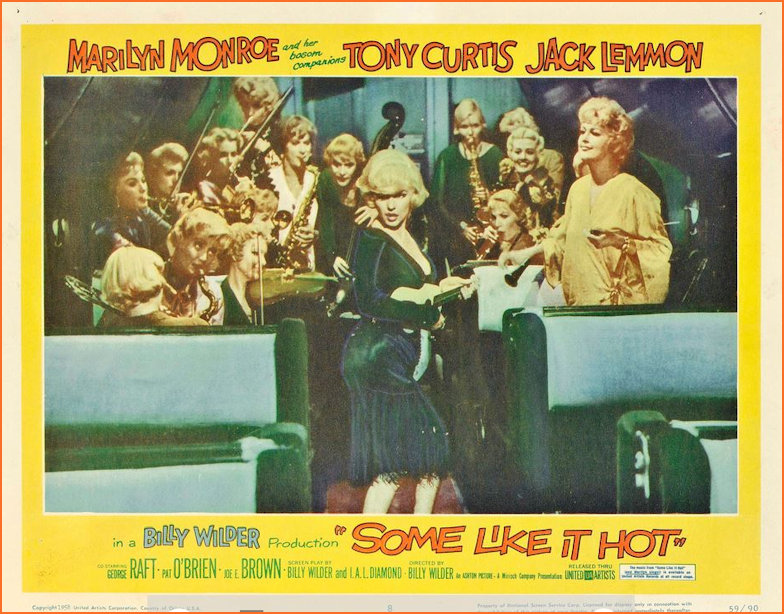
Film Poster / Lobby Card for 'Some Like it Hot' - image sourced from Christie Auctioneers Lot

Rehearse, rehearse, rehearse! The Ladies Band on the train with Marilyn Monroe centre and Tony Curtis and Jack Lemon directly behind her - image sourced from IMDB
During a band practice on the train Sugar drops a flask of bourbon; alcohol is strictly forbidden by Sue. Beinstock reminds Sugar that he warned her not to hide liquor, however, Jerry tells them it's his flask and covers for Sugar. Later that night, Sugar sneaks into Jerry's berth to thank Daphne for covering for her. Jerry suggests that they both share a drink of whiskey, which Jerry steals from Joe's suitcase in the berth below his. The other women in the band quickly discover Jerry and Sugar and assume they're having a party. Joe and Sugar go to the ladies' room to prepare some ice and during their conversation, Sugar tells Joe that she's had bad luck with romance and men and that she has a soft-spot for saxophone players. Joe is floored but keeps his composure and they share a drink together. In his berth, Jerry finds that the other girls are becoming a bit too physical and, afraid they'll find out his true identity, pulls the emergency cord, stopping the train. All the girls spill out of his berth and the party grinds to halt, Sweet Sue flustered by the whole ordeal.
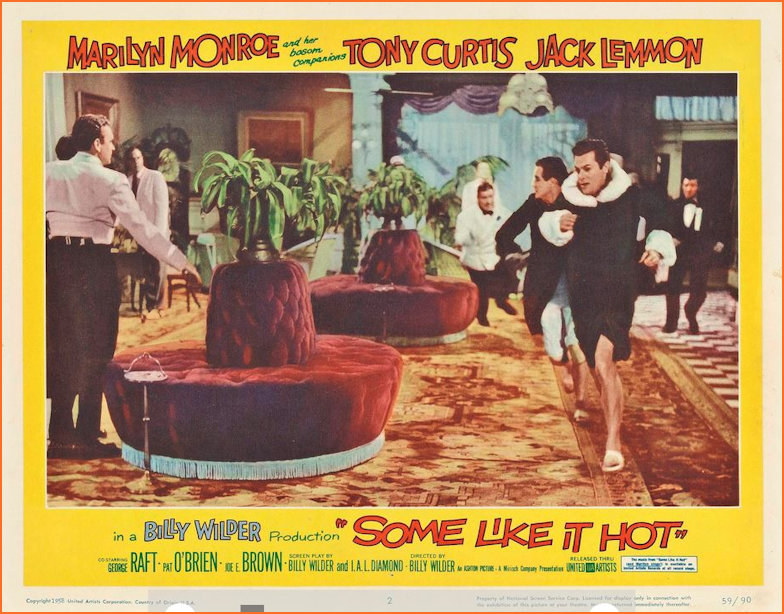
Film Poster / Lobby Card for 'Some Like it Hot' - image sourced from Christie Auctioneers Lot
The train arrives in Florida and the band is taken to their hotel. Joe leaves Jerry to carry all their luggage and as Jerry climbs the steps to the entrance, he loses a shoe. A rich man, Osgood Fielding III places it back on her feet and proceeds with improper advances toward Jerry's alter ego. Jerry slaps Osgood after he gropes him in the elevator. In their room, Jerry tells Joe they should leave the band and go further into hiding. Joe tells him they should stay in disguise since Colombo's gang would never look for them in an all-woman band. Joe is also attracted to Sugar, though he doesn't sight that as a reason for staying, and has his own plans to woo her. Sugar shows up and invites the two to the beach; Jerry joins her but Joe declines. After they leave, Joe takes out a suitcase he'd stolen from Beinstock (along with the man's glasses) and dresses up in a fashionable sailor's outfit. Joe goes down to the beach and sits in a chair, reading the Wall Street Journal. He attracts the attention of Sugar and presents himself as an heir to the Shell Oil Corporation. Sugar begins to flirt with him, however, he remains aloof, telling her he's waiting for a signal from his yacht offshore. Jerry happens by and almost instantly recognizes Joe. He convinces Sugar to go back to his and Joe's hotel room to expose him as an impostor. Joe beats them back there and they find him in the tub, covered with bubbles and posing as Josephine. Sugar tells Josephine that she's probably met a millionaire and she leaves. When she does, Jerry launches into a tirade about faking an identity on the beach and that Joe is trying to take advantage of Sugar. A furious Joe responds by rising slowly out of the tub, still in his Shell Oil Jr. outfit, and plops his wet wig down on Jerry's head. Jerry receives a ship-to-shore call from Osgood: Osgood wants to invite Daphne to have dinner with him aboard his yacht. Joe takes charge of the invitation and tells Jerry to persuade Osgood to take him to a dinner and dancing club instead of the yacht. Joe will go to the yacht as Shell Oil Jr. with Sugar. That night, while Joe & Jerry play with the band at dinner, Jerry receives a giant bouquet of flowers from Osgood. When the gig ends, Joe rushes back to his room and assumes the disguise, while Jerry and Osgood go to the restaurant. Joe arrives at the dock just before Sugar and takes her to the yacht on Osgood's boat. While the two have drinks and eat, Joe again acts aloof towards Sugar, trying to persuade her to kiss him. At first he acts as though he has a psychological block that prevents him from enjoying their romantic evening, but Sugar eventually turns him on. On the shore, Osgood and Jerry dance the tango at a nearby roadhouse all night, Jerry seemingly enjoying the date. Sugar and Joe return to the mainland near dawn, apparently in love. He bids farewell to Sugar and climbs up to his room where Jerry is lying on one of the beds. Jerry tells Joe he's engaged; when Joe asks "who's the lucky girl?" Jerry says he is himself because Osgood proposed to Daphne. The two have a brief debate where Jerry reveals his plan to marry Osgood and tell him the truth right after the ceremony. He plans to extort a large settlement out of Osgood and live on the alimony checks he believes he'll receive. Joe convinces Jerry that he's committing fraud and will be caught. Jerry realizes his plan will fail and shows Joe the pricey diamond bracelet Osgood gave to him as an engagement gift, saying he'll return it. Joe suggests they keep it, perhaps thinking they can hock it for cash. In the hotel lobby, Spats Colombo and his goons arrive for a convention of "Friends of Italian Opera", cover for a meeting of organized crime gangsters. The organization and meeting are being led by Little Bonaparte, the most powerful gangster there. Bonaparte already has a rivalry with Spats, which has been exacerbated by Spats' murder of Toothpick Charlie, who was a good friend of Bonaparte. Jerry and Joe, in the lobby, spot Spats and his crew and immediately get into the elevator to return to their room. Just as the doors are about to close, Spats and his men enter the elevator; Jerry and Joe's disguises work on them and they make it to their room. They pack hurriedly and Joe wants to take care of one last detail: Sugar. He calls her and once again uses his Shell Oil Jr. voice, telling her that he has to leave suddenly. His parents have told him to marry a woman who is the daughter of another millionaire with a large empire. As a final gesture, Joe leaves a bouquet of flowers outside Sugar's room with Osgood's diamond bracelet (the gift to Jerry) hidden inside. Sugar is devastated but accepts the gift. Jerry and Joe climb out the window to avoid running into the gangsters again. However, their path takes them right past Spats' balcony and they're spotted. Spats grabs the bass Jerry left behind and sees the bullet holes from when the two escaped in Chicago. Spats and his men chase them through the hotel but lose them. At one point, Jerry and Joe disguise themselves as a bellhop and a man in a wheelchair and duck into a banquet room, the same room all the gangsters will be eating dinner in. While they hide under the huge table, a pair of shoes with spats on them slides under the table. The two sit still and wait.
Little Bonaparte begins the meeting with a lengthy criticism of Spats himself, admonishing him for the assassination on Valentine's Day and for sloppily letting Jerry and Joe escape. Bonaparte seems to forgive Spats' indiscretion and lightens the mood by announcing they will celebrate Spats' birthday. Spats points out that his birthday isn't for a few months but Bonaparte insists they still have a large cake for Spats. After the cake is brought in and lights dimmed, the entire room sings to Spats and a gangster pops up out of the cake and shoots Spats and his crew with a Thompson. Jerry and Joe burst out from under the table and run out of the room. Just as Little Bonaparte orders his men to catch them, Chicago cop Mulligan walks in and demands to know what happened. Bonaparte avoids the question and Mulligan promises to start a federal investigation. Jerry and Joe retreat to their room, fixing their disguises once again. They overhear a gangster saying that they've got all the standard escape routes covered. Joe realizes that they can escape on Osgood's yacht and tells Jerry to call the millionaire and accept his marriage proposal. Before they leave, Joe wanders into the dining and dancing hall of the hotel and sees Sugar singing "I'm Through With Love". Moved, Joe approaches her and kisses her. Sugar realizes who Josephine really is and leaves the band, following Joe and Jerry to Osgood's speedboat. They all board it and head for the yacht. Joe tries to tells Sugar that he's a cad who took advantage of her and that he's a sax player who will only treat her badly. Sugar doesn't care and kisses him anyway. Jerry begins to tell Osgood that he's equally as treacherous, that he smokes, has been living with another man (Joe), and can't have children, however Osgood doesn't care. Jerry, frustrated, finally pulls off his wig and tells Osgood he's actually a man. Osgood replies, "Well, nobody's perfect." Source : IMDB Synopsis
The Greatest Comedy ever made :
Billy Wilder's glittering masterpiece has topped BBC Culture's 100 greatest comedy films poll. Nicholas Barber explains why. By Nicholas Barber 22nd August 2017
In 1958, Tony Curtis was at a Hollywood party when Billy Wilder took him aside. Wilder was planning a film about two musicians who dress up as women to join an all-girl band, and he asked Curtis to play one of the musicians. Curtis was overjoyed, but he wasn't sure why such an illustrious writer-director would want to use him. "You're the handsomest kid in this town," said Wilder. "Who else am I going to use?" Faced with the question of why Some Like It Hot has topped BBC Culture's poll of the best ever big-screen comedies, it's tempting to say something similar. Wilder's glittering masterpiece doesn't just use the handsomest kid in town (and a terrific actor, to boot), but its most radiant sex symbol, Marilyn Monroe, and one of its most dexterous comedians, Jack Lemmon. It also has a bevy of bathing beauties, a crowd of sinister mafiosi, a glamorous seaside setting in the roaring '20s, and a sizzling selection of songs. It is structured so meticulously that it glides from moment to moment with the elegance of an Olympic figure skater, and the consummate screwball dialogue, by Wilder and IAL Diamond, is so polished that every line includes either a joke, a double meaning, or an allusion to a line elsewhere in the film. To quote one character, it's a riot of "spills, thrills, laughs and games". To quote another, it deserves to be "the biggest thing since the Graf Zeppelin". So why was it chosen as the best comedy ever made? Simple. What else were we going to choose? There's more to Some Like It Hot than its sparkling surface, though. As well as being a romantic comedy, a buddy movie, a crime caper, and a musical, the film is an anthem in praise of tolerance, acceptance, and the possibility of transformation. It's an anthem that we need to hear now more than ever. Wilder borrowed the basic set-up from a French farce, Fanfare d'amour (1935), and a remake, Fanfaren der Liebe (1951), which he dismissed as "a very low-budget, very third-class German picture". Its heroes are Joe (Curtis) and Jerry (Lemmon), a saxophonist and a bassist who are scraping a living in freezing Chicago when they witness 1929's St Valentine's Day Massacre – or a version of that legendary event at least. Desperate to elude the city's most ruthless gangster, Spats Colombo (George Raft), they disguise themselves as Josephine and Daphne ("I've never liked the name Geraldine," explains Jerry), so that they can hide in a Florida hotel for three weeks with a female jazz orchestra, Sweet Sue's Society Syncopators. On the southbound sleeper train, they are both smitten by the band's voluptuous ukulele player, Sugar Kane (Monroe). She tells Joe/Josephine that she is hoping to seduce a millionaire in Florida, so when the band arrives at the Seminole-Ritz Hotel (actually the Hotel del Coronado in San Diego), he switches to another disguise. Stealing some clothes from the band's manager, and stealing his accent from Cary Grant, he styles himself as Junior, heir to the Shell Oil fortune. One of the film's many twists is that when Sugar meets Junior on the beach, he doesn't throw himself at her. He plays hard to get. Sugar tells him that her band specialises in hot jazz, but he sniffs, "Well, I guess some like it hot. But personally, I prefer classical music." Sugar doesn't miss a beat. She claims to have "spent three years at the Sheboygan Conservatory of Music" - a claim she overheard Joe/Josephine making the previous night. "Good school," murmurs Joe/Junior. Sugar, he realises, is just as adept at lying as he is. Meanwhile, Jerry/Daphne has been inveigled into going out with an elderly - and presumably short-sighted - tycoon, Osgood (Joe E Brown), and their enchanted evening ends with another twist: in the morning, an elated Jerry tells Joe that he and Osgood are engaged. Joe protests that there are "laws, conventions" that have to be observed. But when Jerry finally admits to his fiancé that he is a man, Osgood responds with the film's exemplary last line, "Well, nobody's perfect."
'Sweet' or 'hot'
In summary, Some Like It Hot is the story of people who lie and cheat in order to con other people into bed or out of their cash. Wilder has a reputation for dark, cynical films (see also Sunset Boulevard and Double Indemnity), and Some Like It Hot could be categorised as one of them. But it has so much warmth that it carries the viewer upwards like a hot-air balloon. Rather than condemning its unscrupulous anti-heroes, it respects them and sympathises with them in a way which must have seemed radical in 1959, and which seems more radical nearly six decades later. Just imagine how the film's scenario would be treated in a Hollywood comedy today. Joe and Jerry would be punished for their deceit. Sugar would have to catch Joe out, and he would have to apologise, and the viewer would have to sit through a montage of their shared misery before she forgave him. He and Jerry would then use their talent for duplicity to extract a confession from Spats Colombo. And, of course, Jerry and Osgood's heterosexuality would be vigorously reaffirmed. Think of Judd Apatow's comedies, for example. They all conclude that it's amusing for "laws, conventions" to be flouted for a while, just as long as they're put firmly back in place before the end credits roll. Some Like It Hot is too buoyant to be brought down to earth by such prissiness. When Sugar learns that Joe has been tricking her, she runs straight into his arms. When Osgood learns that Jerry has been tricking him, he doesn't bat an eyelid. The message is that there is nothing wrong with faking it until you make it. Experimenting with a new identity can help you become a better, happier person. It can help you survive. And, if you're lucky, you'll find someone who accepts you for whomever you want to be - perfect or otherwise. It's a boldly inclusive message, but it's one that must have been close to the film-makers' hearts. After all, several of them had reinvented themselves, just as the characters do: emigrating from Germany (in Wilder's case) and Romania (in Diamond's), distancing themselves from their hardscrabble pasts in Californian foster homes (in Monroe's case) and on the streets of the Bronx (in Curtis's). For a frantic farce about two cross-dressers on the run from prohibition-era mobsters, Some Like It Hot is a strikingly personal, even semi-autobiographical film. Look again at the beach scene with Joe and Sugar. It was written by two men who were once called Samuel Wilder and Itec Domnici, and acted by a man and a woman who were once called Bernie Schwartz and Norma Jeane Mortenson. Schwartz, who renamed himself Tony Curtis, is playing Joe, who is pretending to be Junior, using the mid-Atlantic vowels of Cary Grant, who was once called Archibald Leach. Mortenson, who renamed herself Marilyn Monroe, is playing Sugar Kowalczyk, who renamed herself Sugar Kane, and who is using lines which Joe used when he was pretending to be Josephine. Not even Twelfth Night or The Importance of Being Earnest had such elaborate fun with its characters' identities. Names, genders, social standings ... they can all change in Some Like It Hot. It's the American way. In Curtis's memoir about the making of the film, he confirms that Wilder and Diamond embedded this theme in its title. People, he argues, can be as fluid as the pop songs of the 1920s, which were performed in different styles - either "sweet" or "hot" - according to the audience's preference. "The concept was important to our movie," writes Curtis. "A person can be more than one thing, depending on the time, the place, whatever. Sweet or hot." Source : BBC
'Dracula' - 1958 (re-named The Horror of Dracula)
Starring those screen greats Christopher Lee and Peter Cushing who weren't even averse to appearing and being sent up on The Morecambe & Wise Show!

'Don't dare see it alone' - just as well I was only 6 in 1958, I wouldn't have been allowed to go alone (ha! ha!) - how curious it is that Peter Cushing gets over the title billing but Christopher Lee hogs the picture!
Hammer Horror led the British industry for many years and is currently enjoying a revival
'Anastasia' - 1956
'The Court Jester' - 1955
Who can resist Danny Kaye? With a fantastic supporting cast of Glynis Johns, Basil Rathbone, Angela Lansbury and Cecil Parker.
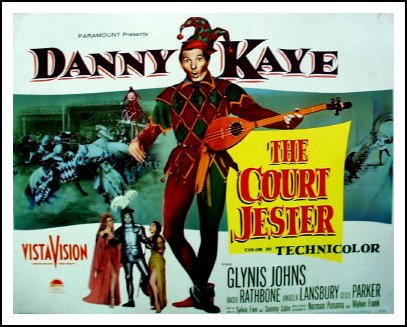
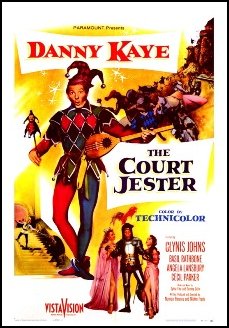
'Ello 'Ello borrowed the tongue twisting ditty so ably performed by Danny Kaye and converted it into their own version!
The Danny Kaye version :
Jean: Hawkins, run for your life.
Hawkins: No, they'd... they'd only catch me and kill me.
Jean: Can you ever forgive me?
Hawkins: There's nothing to forgive.
Jean: Dear Hawkins.
Random Guard: Sir Giacomo! You should be in armor! And you, maid Jean, in the stands.
Hawkins: If I die, just pray that I die bravely.
Witch: You'll not die, you'll not have to fight him. Griswold dies as he drinks the toast.
Hawkins: What?
Witch: Listen. I have put a pellet of poison in one of the vessels.
Hawkins: Which one?
Witch: The one with the figure of a pestle.
Hawkins: The vessel with the pestle?
Witch: Yes. But you don't want the vessel with the pestle, you want the chalice from the palace!
Hawkins: I-I don't want the vessel with the pestle, I want the chalice from the what?
Jean: The chalice from the palace!
Hawkins: Hm?
Witch: It's a little crystal chalice with a figure of a palace.
Hawkins: Th-the chalice from the palace have the pellet with the poison?
Witch:No, the pellet with the poison's in the vessel with the pestle.
Hawkins: Oh, oh, the pestle with the vessel.
Jean: The vessel with the pestle.
Hawkins: What about the palace from the chalice?
Witch: Not the palace from the chalice! The chalice from the palace!
Hawkins: Where's the pellet with the poison?
Witch: In the vessel with the pestle!
Jean: Don't you see? The pellet with the poison's in the vessel with the pestle.
Witch: The chalice from the palace has the brew that is true!
Jean: It's so easy, I can say it!
Hawkins: Well then you fight him!
Witch: Listen carefully. The pellet with the poison's in the vessel with the pestle, the chalice from the palace has the brew that is true.
Hawkins: Where the pellet with the poison's in the vessel with the pestle, the chalice from the palace has the brew that is true.
Jean: Good man!
Witch: Just remember that.
Random Guard: Sir Giacomo! Sir Giacomo, into your armor! And you, to your place in the pavilion.
Hawkins: The pellet with the poison... the pellet with the poison is in the vessel with the pestle, the chalice from the palace has the true that is brew. Eh... brew that is true. The pellet with the poison's in the vessel with the pestle, the chalice from the palace has the true that is brew. Eh, eh, brew that is true. Eh. The chestle with the pal- eh, eh, palace with the...
Random Guard: Look out!
[lighting strikes armor, magnetizing it]
Random Guard: Hurry, now, get into your armor!
Hawkins: The pestle with t... the pellet with the poison's in the vessel with the pestle, the palace from the chalice has the brew that is blue. Eh, no... The pellet with the poison's in the vessel with the pestle. The cha- eh, the pellet with the plip... the pellet with the poisle's in the vessel with the plazzle. Eh, the plazzle with the vlessle. Eh, the the bless... The vessel with the plozle is the plazzle with the...
Random Guard (interrupting): Come along, Sir Giacomo. His majesty is waiting.
Hawkins: The pestle with the poilet...
Random Guard: And take your helmet!
Hawkins: (Muttering "pellet with the poison") Thank you.
Hawkins: The pellet with the poisley's from chalice with the pazley.
Roderick: Oh, hello, my dear, it's nice to see y-
Hawkins: I've got it! I've got it. The pellet with the poison's in the vessel with the pestle, the chalice from the palace has the brew that is true, right?
Witch: Right. But there's been a change. They broke the chalice from the palace.
Hawkins: They broke the chalice from the palace?
Witch: And replaced it with a flagon.
Hawkins: Flagon.
Witch: With a figure of a dragon.
Hawkins: Flagon with a dragon.
Witch: Right.
Hawkins: Did you put the pellet with the poison in the vessel with the pestle?
Witch: No! The pellet with the poison's in the flagon with the dragon, the vessel with the pestle has the brew that is true!
Hawkins: The pellet with the poison's in the flagon with the dragon, the vessel with the pestle has the brew that is true.
Witch: Just remember that.
Hawkins: Yes, thank you very much. The pellet with the chasley, eh... the pellet with the poison is in the pasley with the chazzle. Eh, just remember that.
Griswold's Lackey: Beware of the drinks. One of them is poisoned.
Griswold: Poisoned! Are you sure?
Griswold's Lackey: I heard the witch.
Hawkins: The poisel with the plesley is the chaz... eh...
Griswold: The pellet with the poison's in the flagon with the dragon, the pestle with the pizzle... the pizzle with the f- the, the, the viss...
Griswold's Lackey: No, no, no...
Hawkins: The pellet with the poisley is the chalice with the... he he (laughs nervously at guards)
Griswold's Lackey: ...Vessel with the pestle.
Griswold:The vessel with the pestle has the brew that is true.
Griswold's Lackey: Right. Don't forget it.
Griswold:(mutters): The palace with the dragon... no, no, no.
MC: The knights will approach each other!
Crowd: (Cheers)
Hawkins: The pellet with the poisle is in the flaggle with the chalice.
Griswold: The poison's in the dragon with the pestle.
Hawkins: Eh, ah, the chazzle is in the poisley with the plellice with the plan- eh, plaglice.
Griswold: The pellet with the dragon's in the pestle with the poi-
Hawkins: The pezley with the poisle is...
Griswold:The dragon with the poisle's in the pestle...
Hawkins: Pazzle with the fleegle...
Griswold: (Retrieves helmet magnetically held by H's armor)
Hawkins: The poisley with the plazzle is the plazzle with the ploizle
Griswold:(Mutters)
Hawkins: The chalice with the pa... the flagon with the cha... the floizle with the flagon is the chalice with the poison.
MC: The knights will face the king!
Hawkins & Griswold: (muttering) (sight gags)
MC: They will approach the royal pavilion!
Hawkins: The pellet with the poison's in the flagon with the dragon!
Griswold: The vessel with the pestle has the brew that is true!
Hawkins: Oh, no, pglk, you've got the wrong one!
Roderick: Stop this mockery! There will be no toast! Put them to horse, let them choose weapons, and fight!
''Ello 'Ello' plagiarism - 1985
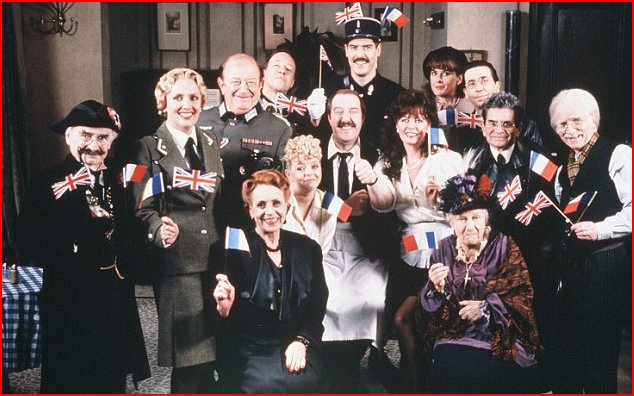
Plot line :
Hans go over to the bar and asks René for the pill that the colonel gave him. He says it contains a drug and is to be put in the general's wine jug ("the drug in the jug"). The next moment, Gruber arrives with the gateau. René desperately tells Hans that it contains a bomb to blow up the general, and asks Hans to do everything he can to ensure that the fuse will not be lit. Hans informs him they have already made arrangements to kill the general by giving him the drug. The exchange is a homage to Danny Kaye's celebrated lines in The Court Jester (The pellet with the poison's in the flagon with the dragon, the vessel with the pestle has the brew that is true.):
Hans: "Do you not see that if we kill him with the pill from the till by making with it the drug in the jug, you need not light the candle with the handle on the gateau from the chateau!"
René: "Simple plots are always the best."
René puts a pill (a headache pill, he later informs Edith, since he will have no poison murders in his café) in the jug, and Hans brings it over the general. They all don German spiked helmets for protection, and then the general receives the wine from the "poisoned" jug (the colonel makes sure nobody else gets any wine from that jug). They have several toasts, but nothing happens to the general. When René comes to serve the chickens, one of them is accidentally spiked on the pickle of the general's haube. As he is a senior officer, nobody dares tell him. As they are approaching the lighting of the candles, René and the girls rush into the kitchen to get water and sand, to be able to put them out.
Dialogue :
Christmas Special: The Gateau from the Chateau
[Colonel Von Strohm and Captain Geering are planning to kill General Von Klinkerhoffen]
Colonel: Hans, have you got the weedkiller?
Geering: Even better - the chemist gave me a pill containing all his best poisons. You take it with a glass of wine. One drink and... [impersonates a dead person] all is quiet on the Western Front.
Colonel: Are you sure it'll work?
Geering: Yes. I told him it was for you.
[Captain Geering is putting the plan to kill General Von Klinkerhoffen into action]
Geering: The Colonel gave you a pill. Where is it?
René: I have the pill in the till.
Geering: Wheere is the vine for the General?
René: It is here in this jug.
Geering: The pill contains a drug.
René: The pill in the till?
Geering: Take it and put it in there.
René: Put the drug in the jug?
Gruber: (Comes in with the Gateau) We nearly forgot the most important thing.
René: (panic) Oh, my God! The Gateau from the Chateau!
Geering: What about the Gateau from the Chateau?
René: It contains a bomb!!!
Geering: A bomb in the Gateau from the Chateau???
René: It is to blow up the General! You must not let anyone light that fuse.
Geering: But where is the fuse?
René: It is the candle with the handle.
Geering: You do not need to kill the General, we have already arranged to kill the General... Do you not see? That if we kill him with the pill from the till by making with it the drug in the jug, you need not light the candle with the handle on the Gateau from the Chateau!
René: Simple plots are always the best.
'The Glenn Miller Story' - 1954
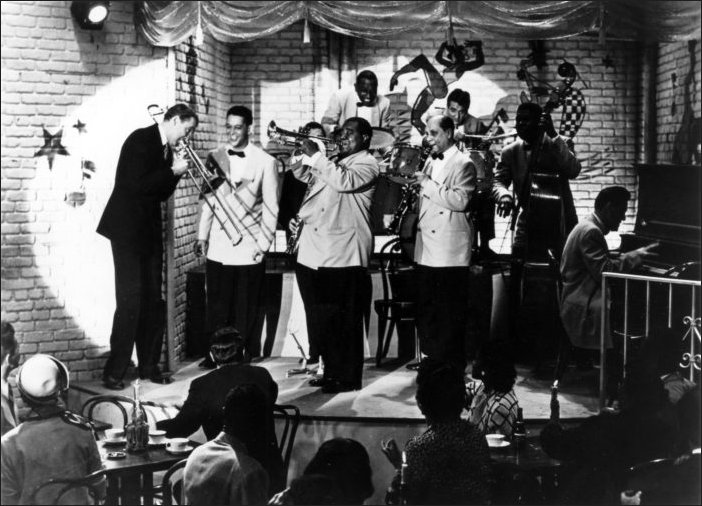
Fabulous moment in the film when 'Glenn Miller' (James Stewart) jams with the real 'Satchmo' - image sourced from with thanks matineederbyshire.org.uk
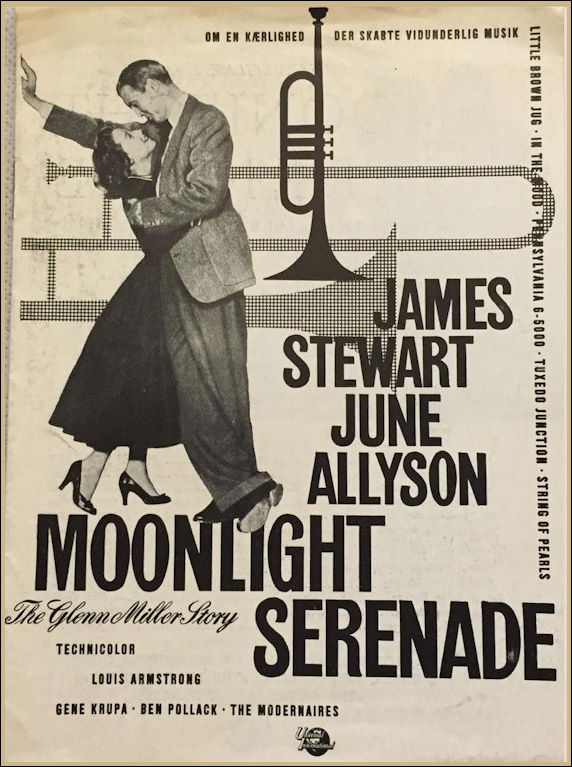
I love this quirky poster which appeared on Etsy
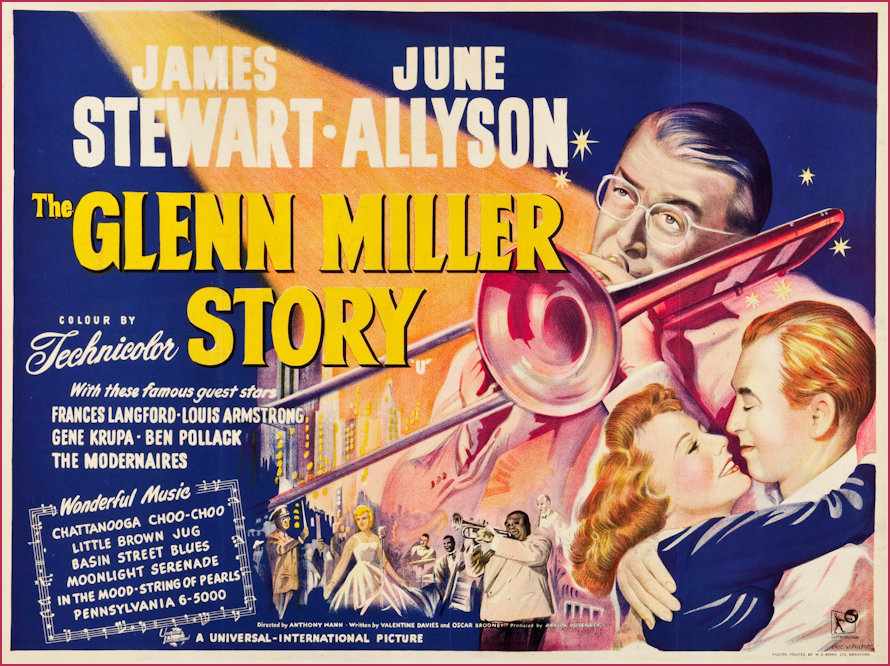
The Glenn Miller Story Film Poster - image sourced from movieposters.ha.com with thanks
It's very difficult to find a decent synopsis or review of this film which is one of my favourites of all time, I can't tell you how many times I've seen it and now that it has been digitilised and coloured it's quite an exceptional experience. This film has everything in it, entertainment, respected actors who don't try to hog the screen or put their own spin on things, wonderful music, a real biographical no-frills plot, a sad ending (that would send today's 'wokes' into panic rooms), clear diction and delivery of lines and historical view from the Depression to the end of World War II - 'they really don't make 'em like that anymore!' Here are a couple of 'comments-write-ups' that 'sort of get it.'
- 'The Glenn Miller Story' traces Miller's rise from pit-orchestra trombone player to leader of the most successful big band of his era. June Allyson is on hand as Miller's wife, Helen, who learns the value of patience when Glenn spends his wedding night jamming with Gene Krupa and Louis Armstrong. Given an officer's commission during World War II, Miller helms the swingin'est military band ever heard. In December of 1944, a plane carrying Miller disappears while flying over the English Channel. In memoriam, radio stations all over the world suspend their regular broadcasts to play such Miller standards as Moonlight Serenade, Chattanooga Choo Choo, and Little Brown Jug. Many of Miller's contemporaries, including his first big-time boss, Ben Pollack, appear as themselves. Sourced from showtimes.com
RT Review | Rating: 4 out of 5. | By David Parkinson
- Director Anthony Mann and star James Stewart made a series of stunning psychological westerns in the 1950s (Winchester '73, The Naked Spur), yet this biopic of the legendary trombonist and band leader will always be their most fondly remembered collaboration. Whether struggling to find the style of swing that would set him apart from his contemporaries, enjoying the brief benefits of fame or romancing June Allyson, Stewart is so perfect for the role that it is hardly surprising that many people are more familiar with his impersonation than they were with Glenn Miller himself. The supporting cast is impeccable and the music, adapted by Henry Mancini, is as bewitching as ever. Sourced from the Radio Times
Lobby Cards

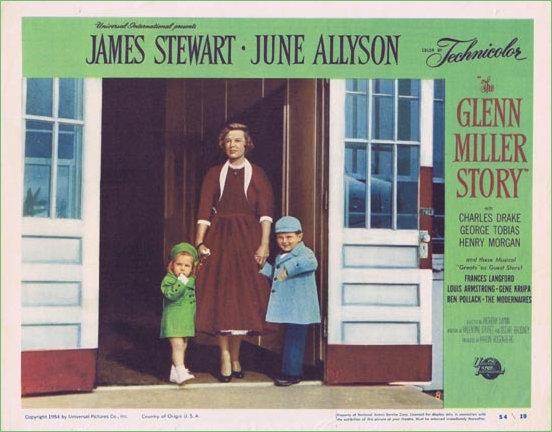
Lobby Cards sourced from : moviestillsdb.com with thanks
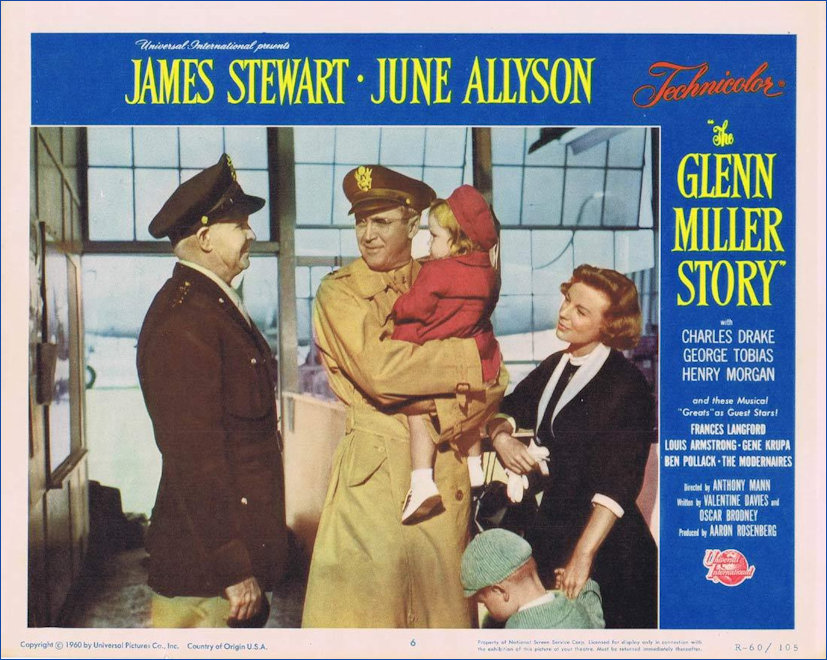
Image sourced from : moviemem.com with thanks
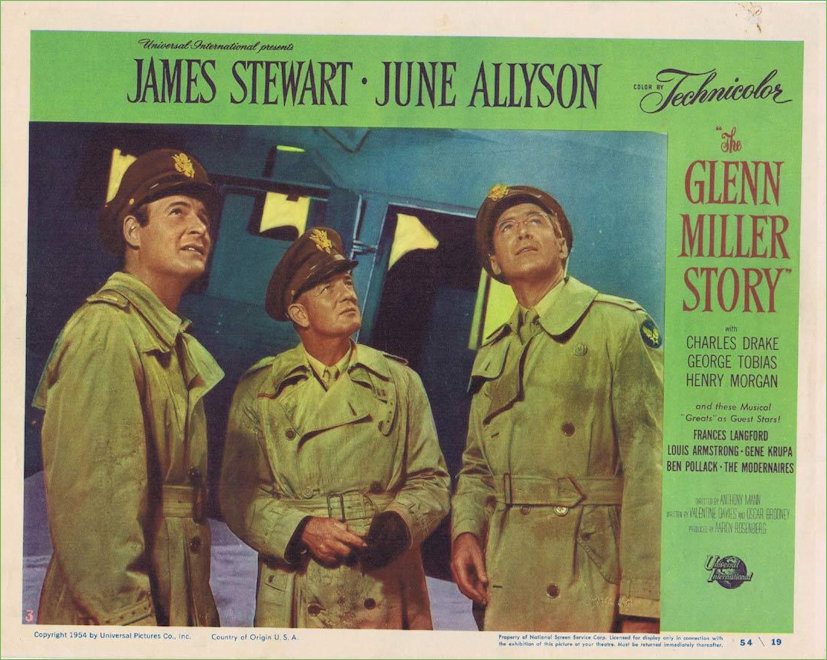
Image sourced from moviemem.com - with thanks
'The Secret Garden' - 1949
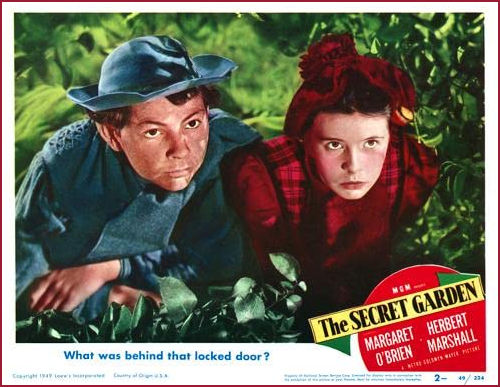
Lobby Card featuring Margaret O'Brien and Brian Roper - image sourced from IMDB
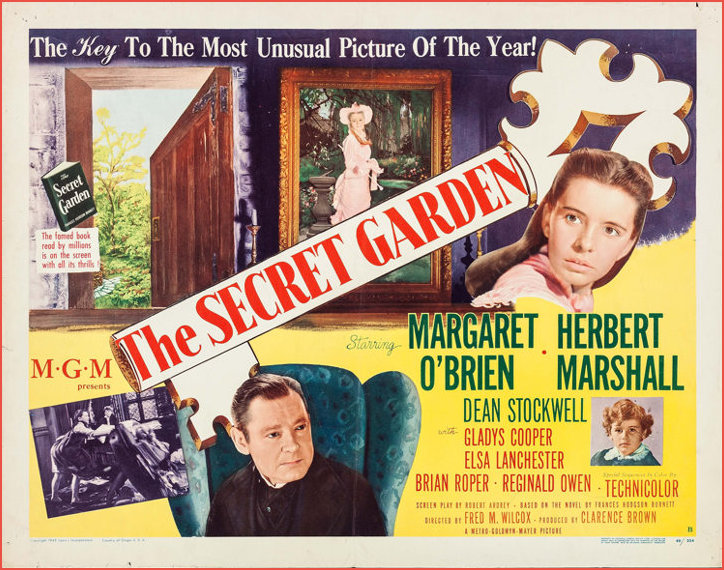
Image sourced from movieposters.ha.com with thanks
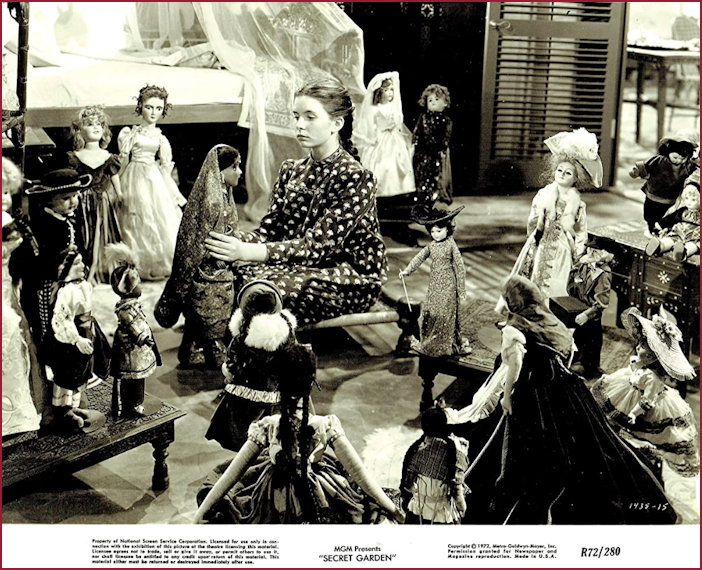
Mary (Margaret O'Brien) regales over her collection of exotic and beautifully crafted dolls
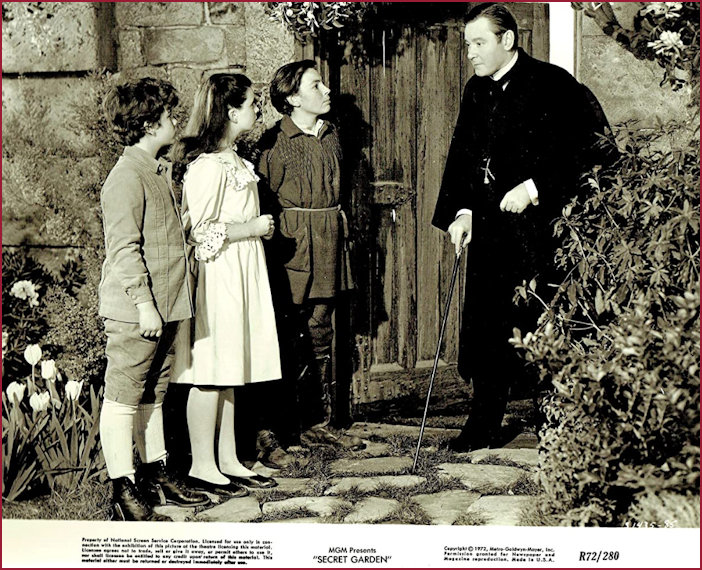
Dean Stockwell (Colin), Herbert Marshall (Archibald Craven), Margaret O'Brien (Mary), and Brian Roper (Dickon) in The Secret Garden (1949) Photographic stills sourced from IMDB
When cholera takes the parents of Mary Lennox, she is shipped from India to England to live with her Uncle Craven. Archibald Craven's house is dark and drafty, with over 100 rooms built on the edge of the moors. Mary finds that her Uncle does not wish to see her, which is fine with Mary as she herself is rude and spoiled. While walking the gardens the next day, Mary notices that there is a area in the garden surrounded with a high stone wall and no doorway. Dickon, brother of a housemaid, tells her of the garden behind the wall. By the path, the raven unearths the hidden key so that Mary and Dickon are able to enter the walled garden to find it overgrown and neglected. Inside the house, she finds that Archibald has a son named Colin, who is crippled and as spoiled as she. Together these three work to make the secret garden their own world. Sourced from : Tony Fontana
My overriding memory of this film, which I love and none of the re-makes have moved me, is when the screen bursts into colour as the the Garden reveals its secrets and blooms into life.
'Kind Hearts & Coronets' - 1949
"This coolly elegant, subversive Ealing Comedy was originally billed as "a hilarious study in the gentle art of murder." Dennis Price is sublime as Louis Mazzini, an embittered young commoner determined to avenge his mother's unjust disinheritance. Using a variety of imaginative techniques, Louis proceeds to eliminate every single nobleman and noblewoman ahead of him in the line of succession. In an inspired tour de force, Alec Guinness famously played eight different members of the same family, of both genders and a six-decade age span. Kind Hearts and Coronets is a timeless work of immense sophistication and has been beautifully restored." Source : Plymouth Arts Centre

A rare find - a 'Lobby' Card showcasing Alec Guinness and his 'alter egos.' - Image sourced from IMDB / Amazon
Actually I'm not sure I could have put it better myself but it has always been Dennis Price who has made the film for me as he is a 'whole' character and it is fascinating to see him evolve in a way the 'cameos' played by Alec Guiness cannot by virtue of their short-lived (no pun intended) appearances which are fab-u-lous of not empathic! My favourite is Lady Agatha which is why I have decided to showcase her unusual demise (in a hot air balloon - please note 'Neighbours', Ealing Comedy did it first!) Of all the eight characters Lady Agatha spends very little time on screen compare to the other seven - was this because Alec Guinness was not happy dressing up as a woman? It would be a shame if that were the case as he did it so beautifully nearly upstaging the irrepressible Alastair Sim who carried off his St. Trinian Headmistress with great aplomb!
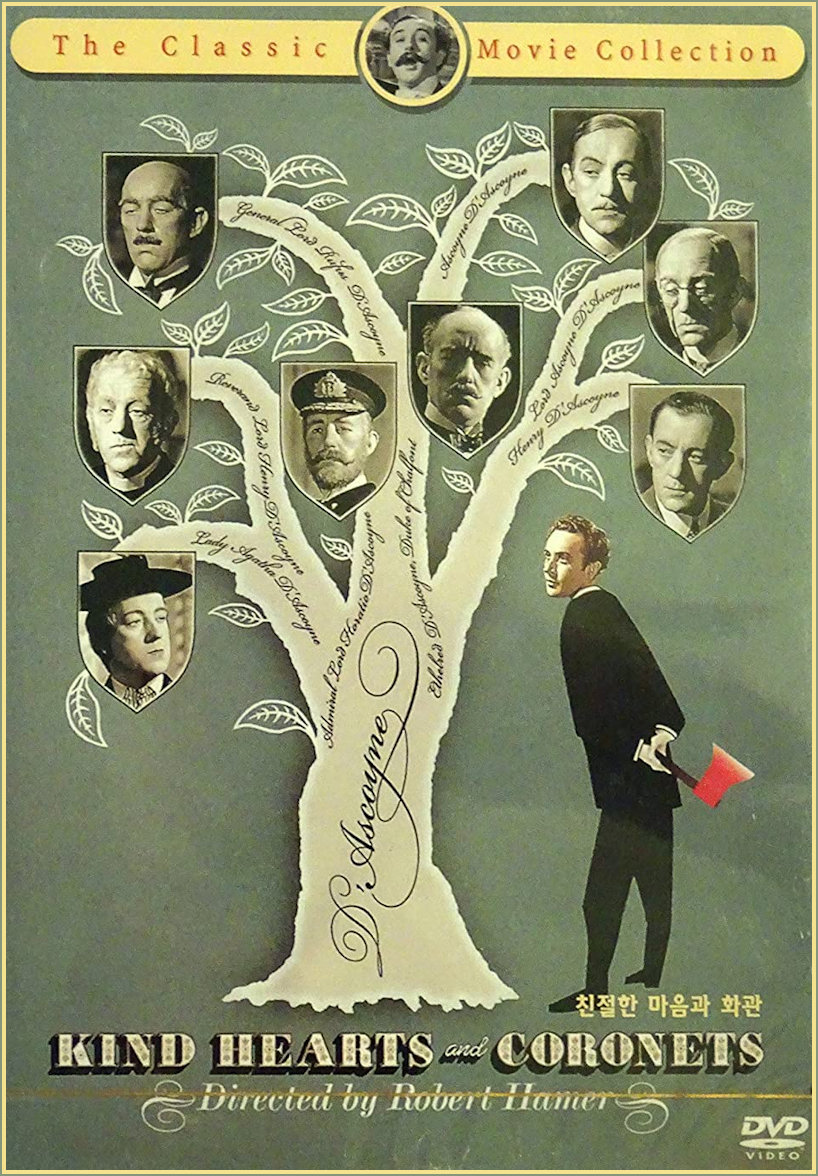
A DVD cover using the original concept for a modern day audience - image sourced from Amazon
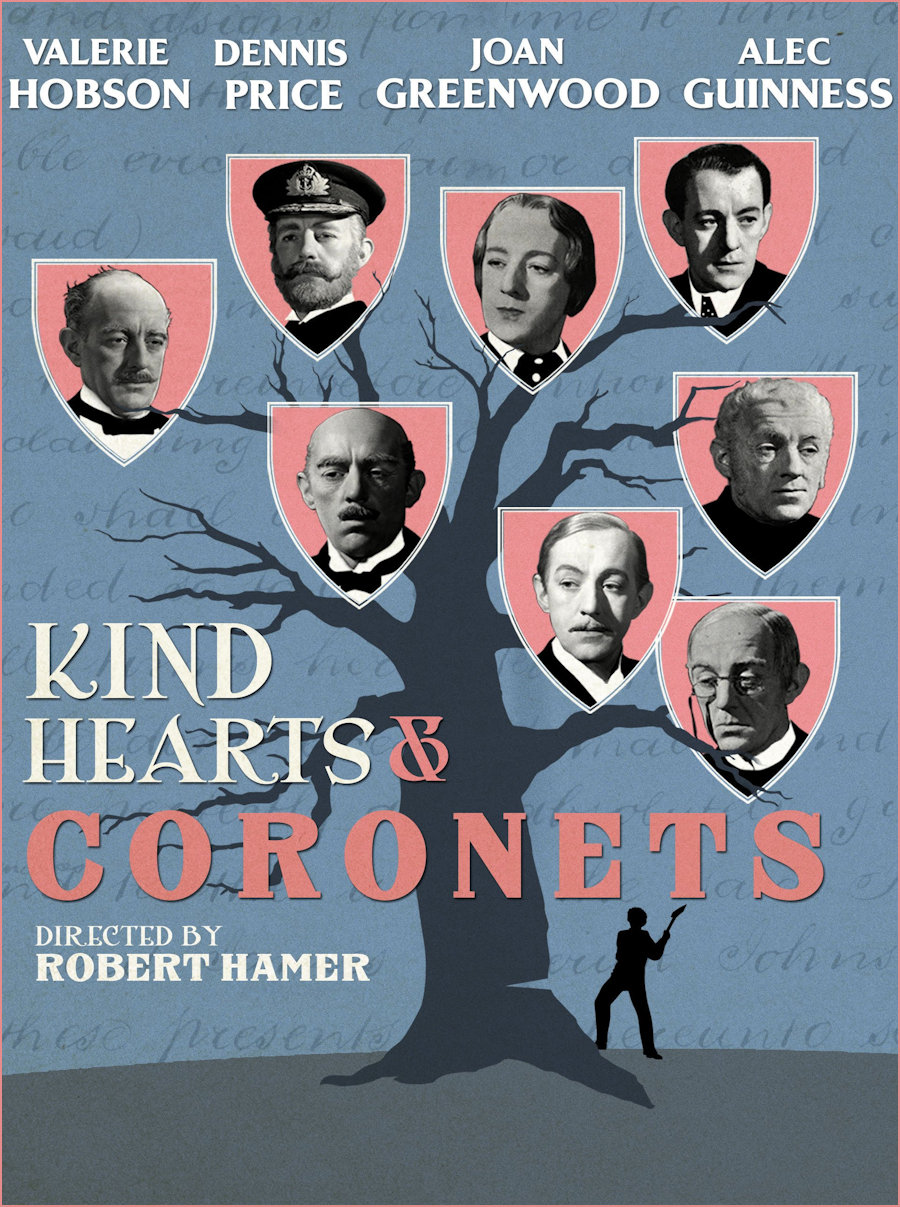
Prime Video have produced this stunning Artwork which beautifully captures the feel of the film and the style of the time - however it only features the eight cameo performances by Alec Guinness

A poster for 'Kind Hearts & Coronets' celebrating its 70th anniversary restoration using a limited colour palette echoing shortages produced by WWII and featuring a 'wall' of 'most wanted' that are struck off as they are dealt with - both assassin and assassinated feature! - Image sourced from and courtesy of IMDB
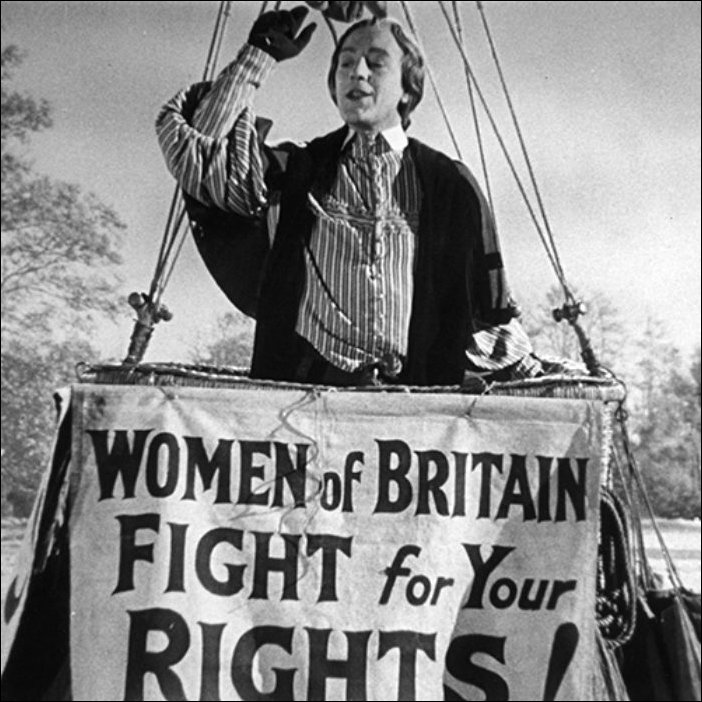
'Lady Agatha' preparing to champion one of her madcap causes in a Hot Air Balloon ...... (image sourced from Plymouth Arts Centre)
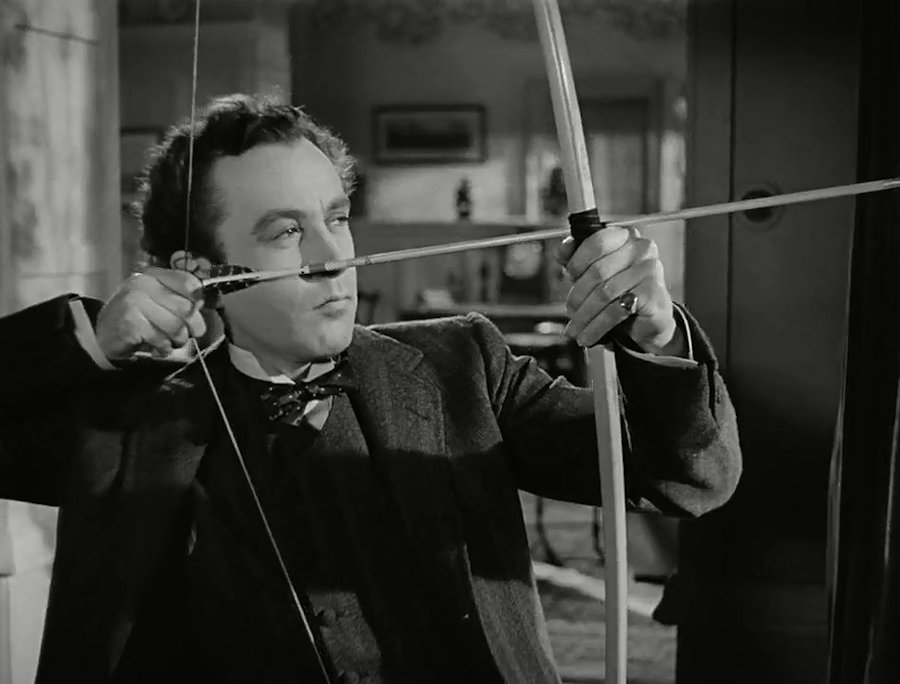
... giving her aggrieved relative something to aim at and .... (image sourced from IMDB) - not that he would ever make a 'Robin Hood'
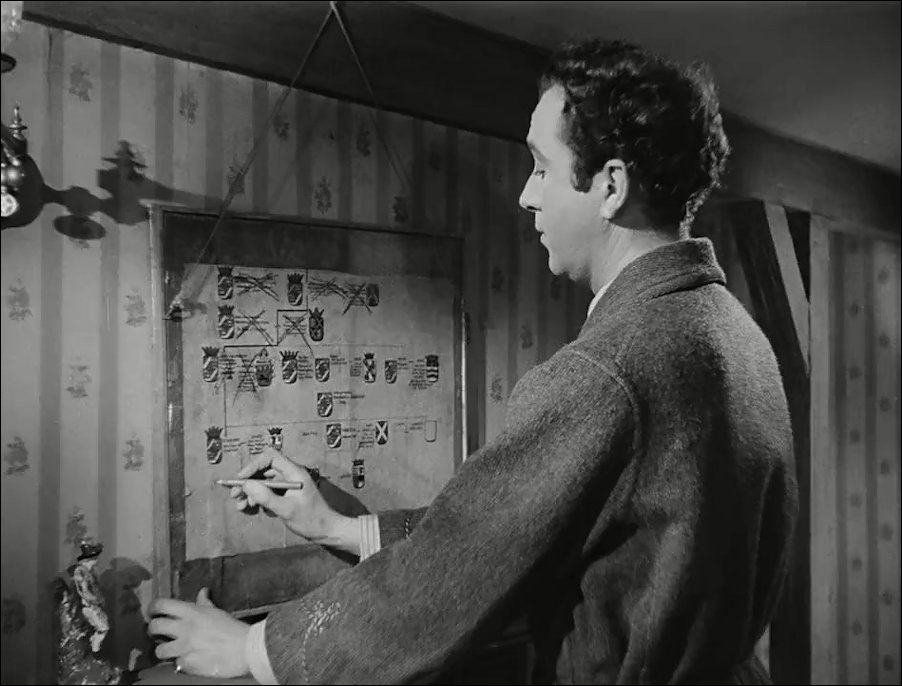
... cross of his 'hit list'! - Image sourced from IMDB
This short sequence of stills from the film show Alec Guinness in the only 'female portrayal' of one of the family that need to be disposed of so that Louis Mazzini can inherit the legacy he so covets (has ever a villain been so sympathetic and loveable as Dennis Price?)
Why Kind Hearts and Coronets is the greatest British comedy ever
Brought to you by Vintage Classics | By Catherine Gee | 4th July 2019
As vintage film, Kind Hearts and Coronets, celebrates its 70th anniversary, discover why it's arguably the greatest British comedy ever made The year 1949 was a golden one for Ealing Studios. In the space of three months, they released Passport to Pimlico, Whisky Galore! and Kind Hearts and Coronets, setting a new standard for British comedy. The tale of a young aristocratic outcast's plan to murder his entire estranged family to secure a dukedom in Kind Hearts and Coronets is arguably the finest British comedy ever made. And even 70 years later, its dry, biting wit and seriously black subject matter can elicit as many laughs as gasps. As Hollywood director John Landis says in his introduction to the special 70th anniversary Collector's edition: "This blackest of black comedies manages to be lovely, funny and deadly, all at the same time." Here are five reasons why its brilliance still stands strong today.
It took a problematic book and made it into a great film
The 1907 source novel, Israel Rank by Roy Horniman, was almost out of print until just 10 years ago. It was only because of an exhaustive search by The Sunday Telegraph columnist Simon Heffer that the witty and often scathing novel with a cut-glass tone was rediscovered and returned to prominence. A lot of changes were made by co-writers John Dighton and Robert Hamer – the latter also directed – to omit the crude anti-Semitic characterisation of its lead character. The film was released only four years after the end of the Second World War, and this was not a time for such dubious mockery. Although some argue that the book satirises anti-Semitism, it cuts deeply into the bone in doing so.
It is a superb satire of British society
Dighton and Hamer pull no punches when it comes to this skewering of British snobbery, hierarchy and the class system – from the farcical deference shown to protagonist Louis Mazzini (Dennis Price) even when he is awaiting execution for a murder that he did not commit to the all-too-easy hoodwinking of the upper classes. That he achieves his goal by becoming a serial killer may be shocking to Edwardian Britain, but how many of those early holders of noble titles also got there by slaughtering a few men at the request of their king?
Its performances have rarely been bettered
"You're a lucky man, Lionel. Take my word for it," says Louis to his friend on the day of the wedding, the morning after he has bedded Lionel's new wife Sibella (a marvellous Joan Greenwood). Price's bold, dry delivery breathes life into a character who is, in essence, a psychopath. But he is matched and more by the 34-year-old Alec Guinness's astoundingly effective performance as eight members of the D'Ascoyne family. Playing seven men and a woman, aged from their twenties to their eighties, each character is entirely its own creation and none appears to be imitating the other.
That wonderful voiceover
As Louis writes his memoir in his prison cell, his words become what might be the most literary voiceover committed to screen. Far from a lazy or needless device, this is a masterclass in biting Wildean tone, even down to the flippant rhyming couplet: "I shot an arrow in the air; she fell to earth in Berkeley Square." Instead it is a window into Louis's mindset that we would otherwise miss out on.
It has the darkest comedy plot ever
Fifteen years later, Dr. Strangelove would come along to attempt to usurp Kind Hearts as both the blackest comedy and the greatest use of an actor playing multiple roles. Both are wonderful films, but Kind Hearts manages to weave more layers and more societal complexity into its darkness. Beyond the murders, both Louis and Sibella are scheming con artists, engaged in a flagrant affair under the nose of her husband.
Many of the film's scenes had to be cut for the American audience to appease the censors, not least those depicting adultery. Nowadays, many modern comedies make use of sex, gore and glamour, but these clashing worlds of upper-class Edwardian Britain and an otherwise polite serial killer attacking his own family gives it all the more potency. Source : The Daily Telegraph

Vintage classic: the Collector's Edition of Kind Hearts and Coronets has been restored to 4K on Blu-ray and DVD
'Mildred Pierce' - 1945
Another film based on an original book written in 1941 so the film makers picked up the option on it very quickly after the conclusion of WWII.

This unprepossessing 1st edition version of 'Mildred Pierce' by James M. Cain (New York, 1941) hardly does the content credit nor is a design that would immediately catch my eye to want to own .... whatever possessed the publishers? It's 1941, the USA is not yet in WWII so maybe it's down to the good old censor .... image sourced from abebooks.com with thanks.
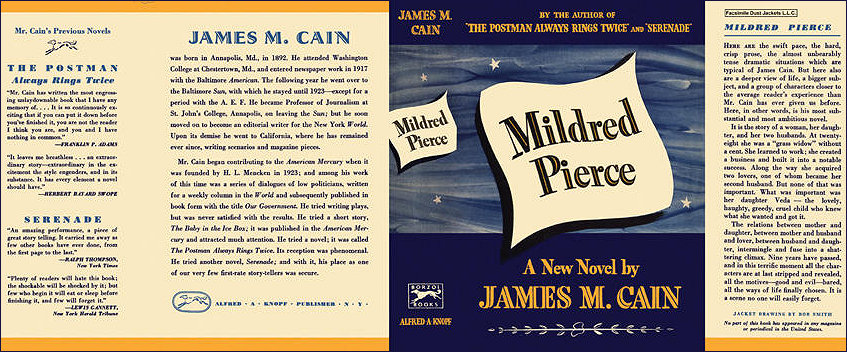
This reproduction (facsimile) version of the full dustjacket of the first edition of 'Mildred Pierce' by James M. Cain (New York, 1941) is probably closer to the original colour wave than the image sourced from abebooks.com (see above) and more in keeping with the style of the 1940s. At least the publishers didn't stint on the information that they provided - image sourced from dustjackets.com with thanks.

This is the dustjacket found on the Australian first edition of 'Mildred Pierce' by James M. Cain - this edition would certainly have appealed to me - my thanks to the bentleyrumble blogspot from which this image is sourced with thanks

I like this clever French poster for 'Mildred Pierce' the film featuring 'Mildred Pierce' the book (le roman) combining the two - 'The first French release poster for Joan Crawford's 1945 Oscar-winning role, directed by Michael Curtiz and based on a novel by James M. Cain' - image and caption sourced from the filmartgallery with thanks
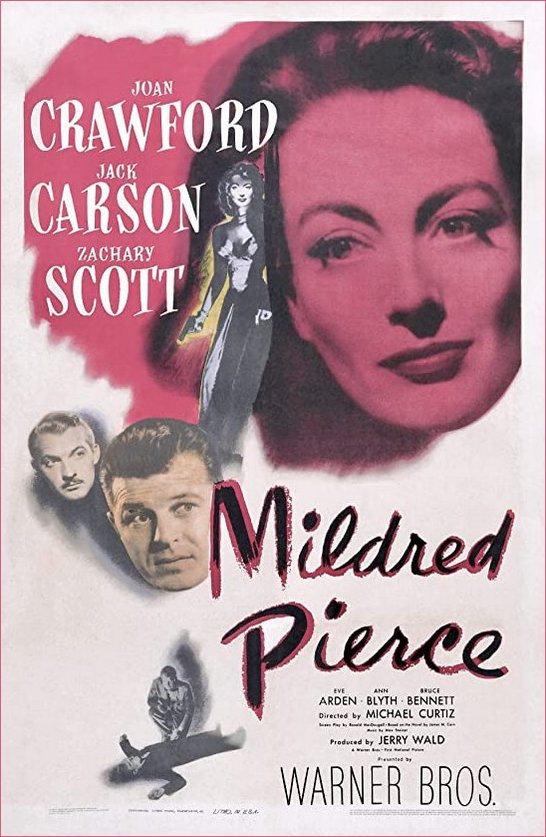
This poster (of the time) looks almost ready to just be placed on a DVD cover - image sourced from IMDB with thanks
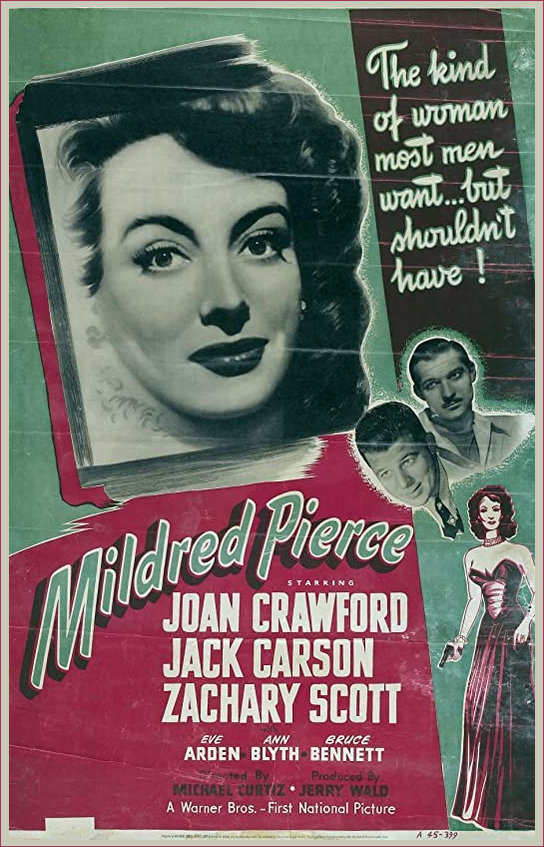
I love this combination of plum/maroon and green in the posters of the day - image sourced from IMDB with thanks
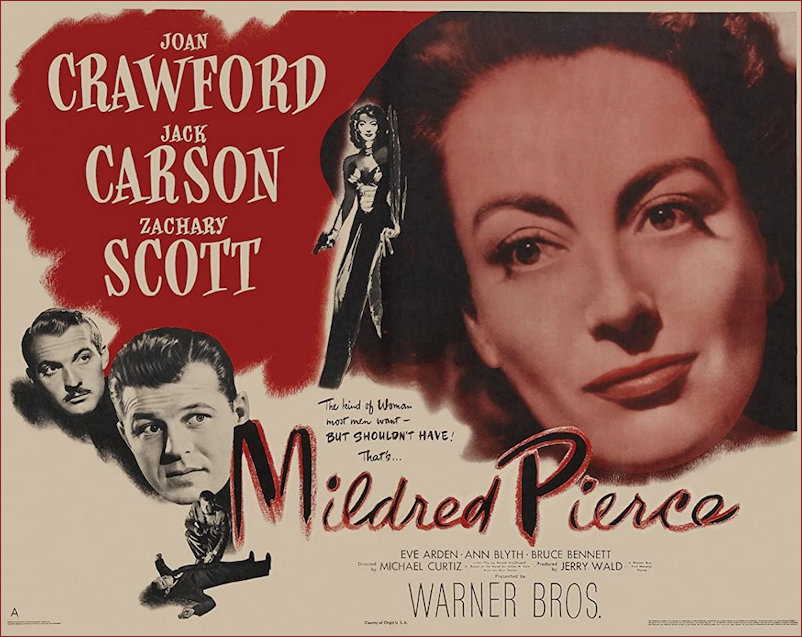
One of many film posters to choose from with a strapline that would mortify the feminists and woke brigade of today 'The kind of Woman most men want - but shouldn't have! That's Mildred Pierce' - personally I find it a bit harsh considering the content and circumstances of the tale which forces Mildred Pierce to rise from her former 'doormat' ashes to become the woman she was always meant to be - had she not lived in the 1940s! Image sourced from IMDB with thanks
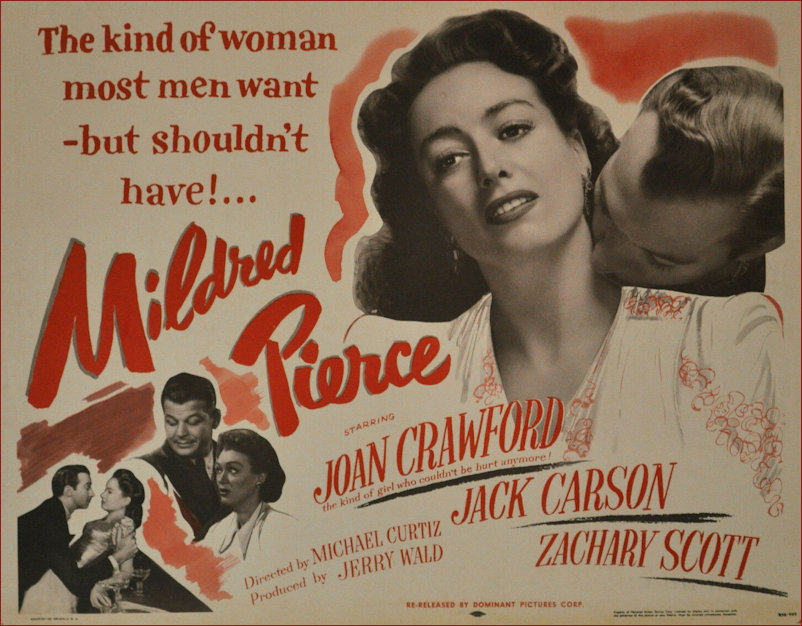
Ebay provides us with an alternative poster, still featuring the strapline but this time providing us with a glimpse of the young she-devil 'Vida' - image sourced from ebay with thanks
Lobby Cards
I do so love 'Lobby Cards'
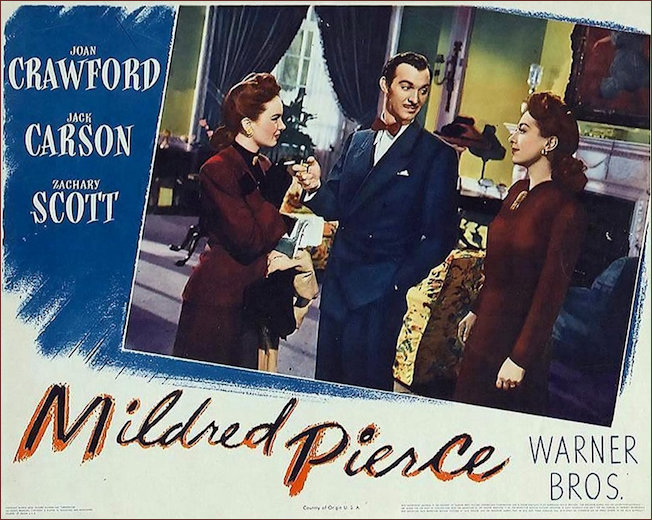
A 'happy family' until the truth starts to emerge - image sourced from IMDB with thanks
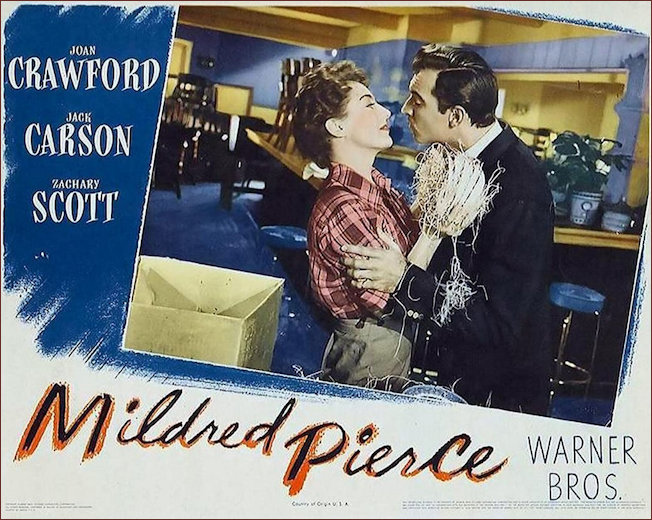
Catching her in an unguarded moment and cashing in on Mildred's enterprise and determination - image sourced from IMDB with thanks
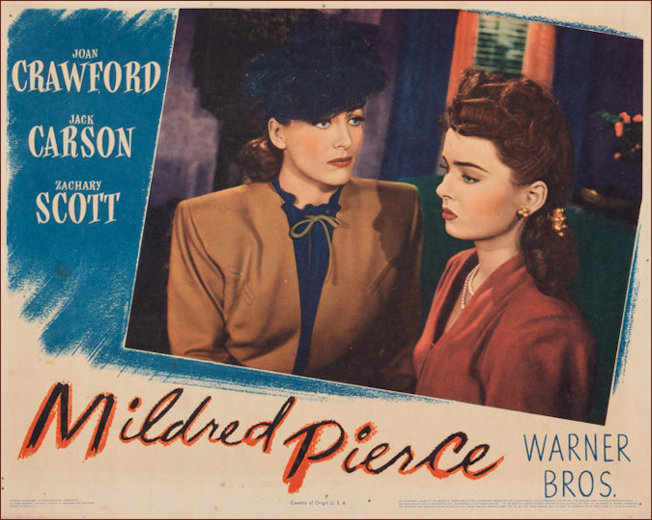
Mother (Mildred) and daughter (Vida) in a tense moment as realisation dawns on Mildred that she has actually created the monster that Vida has become - image sourced from movieposters with thanks
'The Halfway House' - 1944
This is another film like 'Things to Come' and the as yet, unidentified, film with the opening scene of a rope and plank bridge collapsing have indeed haunted me for many, many years. 'Things to Come' is now an embedded favourite, and 'The Halfway House' lives up to all its mysterious promise. Shame battered women have taken the name to mean something entirely different!
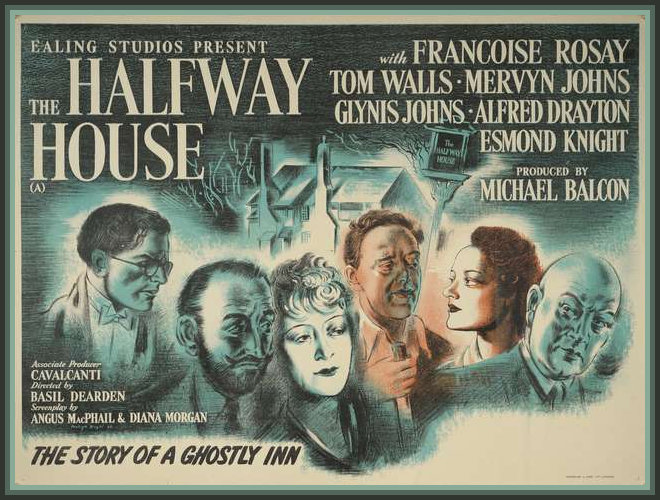
Poster sourced from and courtesy of Ewbanks Auctions
The IMDB summary is succinct and to the point! "A group of travellers, all with something to hide in their past, take shelter from a storm in an old inn. The inn-keeper seems a little mysterious..."

The simple but incredibly powerful credits screen sourced from and courtesy of silversirens.co.uk
The BFI contribution contains 'spoilers' but is a superb précis as reproduced here : "The famous Welsh conductor David Davies is told that he has three months to live, and his doctor suggests that he goes to take a break at The Halfway House, a small hotel in a remote part of the Welsh Valleys. Richard French is also on his way to the hotel with his daughter, Joanna. Unknown to him, she has overheard him and his wife, Jill, discussing their plans to divorce. At the station, they meet up with a young couple, Terence and Margaret, and all four walk to the hotel together. In the Valleys, William Oakley, a criminal profiteering from the war, meets his old friend Captain Fortesque, who has just refused work as a prison governor because he doesn't want to contribute to the war effort. They also travel to the hotel. At the hotel the landlord, Rhys, seems to appear before Fortesque out of thin air and, surprisingly, appears to be expecting his arrival. Rhys introduces his daughter Gwyneth, who arranges a room for David, who has just arrived. Former ship Captain Harry Meadows and his French wife, Alice, also arrive, after having argued about the recent death of their only son, Jim. When Alice is unpacking in her room, Rhys tells her that she doesn't need to look for evidence of her son's afterlife. Meanwhile, it transpires that Joanna has told Jill where she and her father would be staying, and she too is at the hotel. Richard catches Jill flirting with Fortesque and they argue again. Terence (who is Irish) tells Margaret that he is going to be stationed in Berlin as part of his job, and justifies it by saying that Ireland hasn't declared war on Germany. She hates the idea and says that she won't marry him until he comes back from Berlin. At dinner, everyone meets at the table and Terence says that Ireland should remain neutral. Alice disagrees, using France's situation as an example. Rhys tells the guests that the hotel was bombed a year ago, and then they all leave. David and Gwyneth talk over the washing up. Gwyneth tells him not to be afraid of dying.
The next day, Harry takes Joanna out on his boat, so that she can pretend she is drowning in order to try and get her parents back together. Instead, by accident she and Harry fall in - but Harry can't swim. Her cries alert her father and Fortesque, who rescue both her and Harry, but on shore Joanna's parents discover that she had planned the whole thing, and they argue again. Meanwhile, Rhys speaks to Terence and challenges his Irish nationalism, saying that he wouldn't put Wales before the whole of humanity. Gwyneth speaks to Joanna and tells her not to give up trying with her parents. Inside, Alice conducts a séance to try and speak to her dead son. She hears a voice which she believes is Jim's, but it is the radio, which Harry has just turned on. She flees upstairs in tears, and Harry tells everyone in the room that he just wants his son to rest in peace. Rhys tells him to say that to his wife, and Harry goes upstairs and makes up with her. Downstairs, everyone listens to the radio, which is discussing last year's news about the fall of Tobruk. David realises that everything in the hotel is exactly one year old. They change the channel, and hear David conducting a performance in Toronto, confirming his suspicions. He warns them to be quick - because last year's air raid will happen and they will be bombed again.
Bombs start raining in, and Fortesque writes to his old regiment asking if they will take him back - he is now fully committed to the war effort. Joanna's parents are reconciled, and Terence decides to fight against Germany. Rhys confronts Oakley and tells him to stop profiting from the war and to follow his heart. Rhys and Gwyneth tell everyone to leave and live their lives. Everyone files past and recounts what they are going to do in the future. The hotel crumbles into fiery rubble, before dissolving away and leaving the green valleys beneath."
'Ivan the Terrible' - 1944
Why this film in particular? Well, at the end of my Foundation Course at Lancaster College of Art in 1971 we had completed the course and taken our examination/assessments to complete the academic cycle, but the law required us to remain in our further education until a given date (two days hence as it happened). Anyone not attending physically could have been stripped of the qualification or made to pay back their education grant - draconian or what by these days standards? Not at all, it instilled discipline and gave me the surprise of my life by making me a lifelong fan of Eisenstein despite his Russian origins. I was still naive enough to despise all things Russian because of what my parents, and in particular my mother had had to endure at their hands! So it gives me a lot of pleasure to include this film in my 'one-off' favourites as I am also never disappointed with what I find whilst researching a given subject. The first surprise is this fabulous poster which refers to the film (parts 1 and 2) as a 'cinematic event' not just a forthcoming showing! In part 2 we get a glimpse of colour during a frenzied dance which can be viewed here courtesy of criterion.com
"Ivan the Terrible – a two-part historical epic – was Sergei Eisenstein’s last film. Part I was filmed between 1942 and 1944 in Alma Ata, where Eisenstein was evacuated to during the Second World War. The film stays relatively true to historical events but shouldn’t be relied upon as entirely accurate. It is, however, stunningly beautiful. Note: the English translation of Ivan IV of Russia’s name “Ivan Grozny” as “Ivan the Terrible” isn’t entirely accurate. “Grozny” means “Dangerous”, “Formidable” or “Inspiring Terror”." - melmoth.co
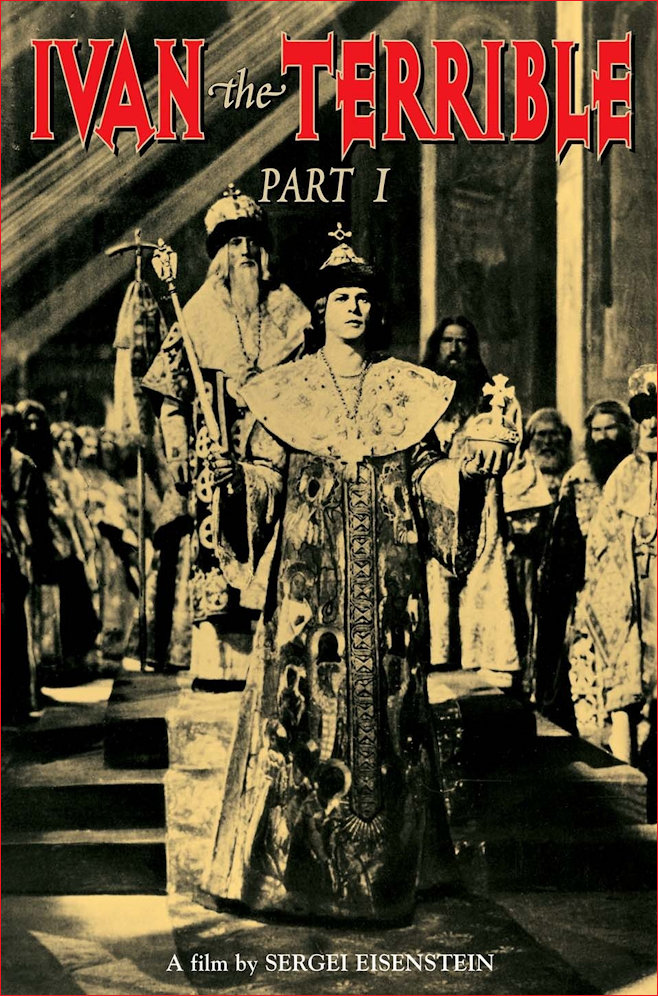
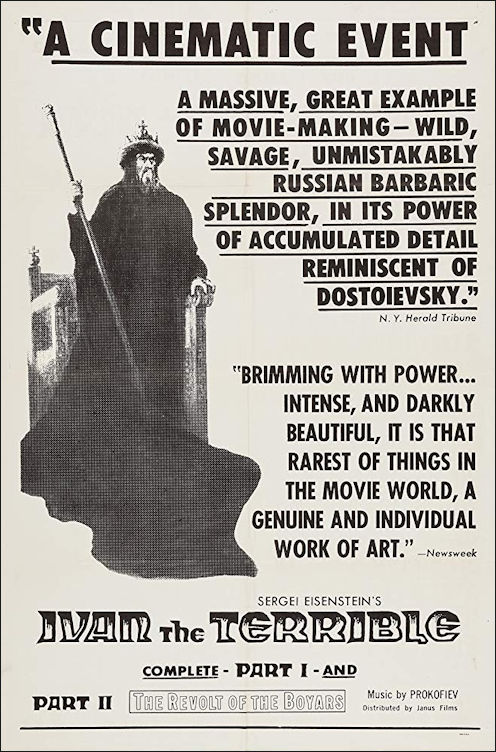
'A cinematic event!' - it certainly was, especially the splash of colour that accompanies the frenzied dance in Part 2 - image sourced from & courtesy of IMDB
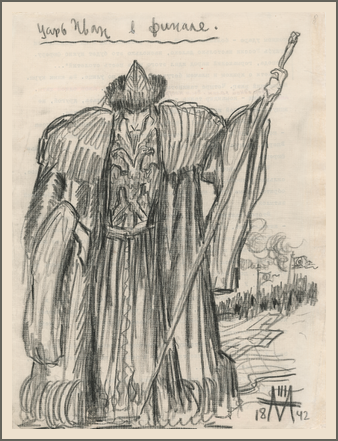
Sergei Eisenstein: Preparatory drawing for Ivan the Terrible 1942. © Russian State Archives of Literature and Art, Moscow - Source TimeOut
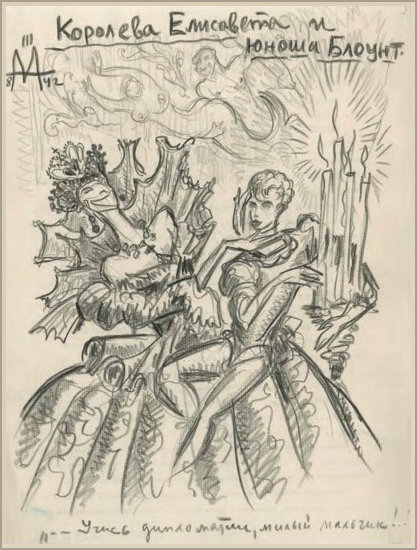
Sergei Eisenstein: Preparatory drawings for Ivan the Terrible and Queen Elizabeth I 1942 - looks as if Einstein enjoyed visualising our good Queen Bess - this cartoon also presumably the © of the Russian State Archives of Literature and Art, Moscow
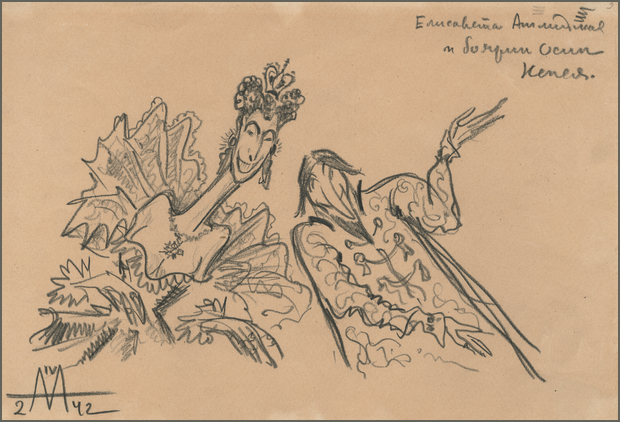
Sergei Eisenstein: Preparatory drawings for Ivan the Terrible, Queen Elizabeth I and Boyar Osip Nepeya 1942. © Russian State Archives of Literature and Art, Moscow - Source TimeOut
"Filmmaker Sergei Eisenstein’s singular vision saw him win the approval of, but also get into hot water with, the Soviet authorities (he produced masterpieces including ‘Battleship Potemkin’ under Communist rule). His innate sense of montage, meanwhile, brought him fame the world over. In this exhibition we see another side of the great man, in the form of sketches made for the theatre, correspondence with funding agencies and drawings done just for amusement. He turned out stunning Cubist-like sketches of figures from ‘Macbeth’ and enchanting ‘Ivan the Terrible’ storyboards that look like they could be transformed into animation (also a renowned film critic, Eisenstein wrote a book on Disney). His was undoubtedly a boundless imagination, and there is a focus on his travels including time he spent in London (he spent two years touring and lecturing in Europe). He even threw together some costume designs for a production of Sherlock Holmes which was never staged (‘Unrealised’ quickly emerges as a theme here). Perhaps most intriguing are his quick, sultry sketches of French poets Rimbaud and Verlaine, whose passionate love affair during the 1870s was well documented and whose ‘scandalous’ lifestyle forced them to flee Paris for London. Eisenstein was apparently inspired by their story, and this perhaps props up rumours that he was purported to be gay; though if he wasn’t, he was certainly more open-minded than the Soviet government would have wanted (homosexuality was re-criminalised under Stalin’s rule). Despite any struggles or limitations he may have encountered – financial or otherwise – this intimate look at the director’s hand-produced work shows it was impossible to dampen his enduring spirit." By : Ananda Pellerin
Sergei Eisenstein: Drawings, 1931-1948 - excellent article here
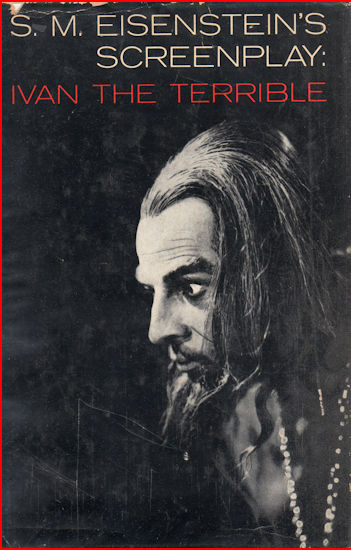
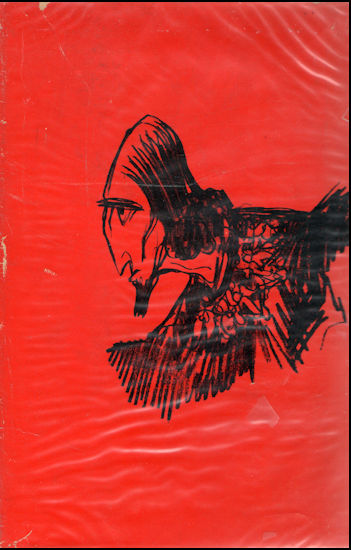
I was so enamoured of the film and hoping to learn more and possibly some snippets from Part III if ever there was to be one, I bought, what would popularly now be known as a Film 'tie-in', the book! It's taken me quite a few years to realise just what a lucky buy it was. A first 'printing' and possibly American import! It contains the script and Eisenstein's scribbles - a treasure! Remarkably still available on Amazon.co.uk

Described as a 'citation' this review/article provides some interesting information concerning the film outside of the USSR - image sourced from CineFiles
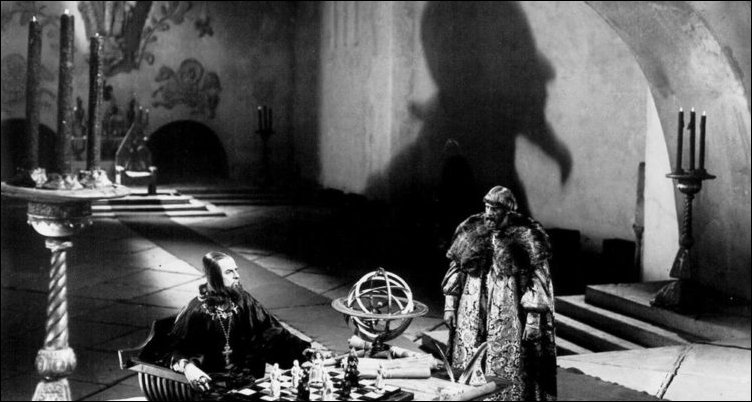
The age of enlightenment and terror - this image shows an astronomical globe and chess set but sets Ivan above everything in the grotesque and sinister magnified shadow of his of profile.
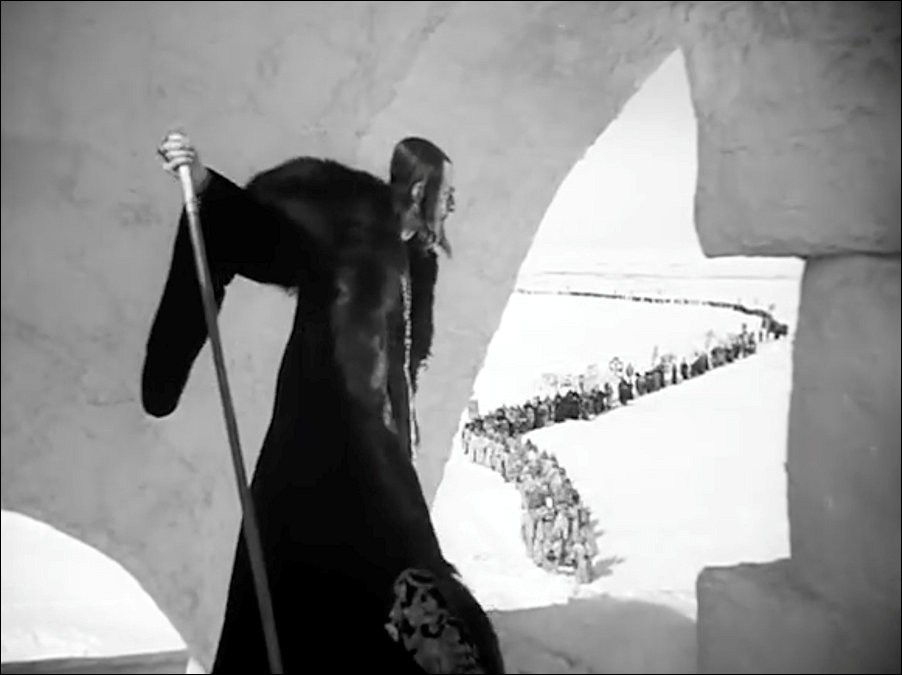
“It is easier for us to imagine Russia without people than without a tsar.” -
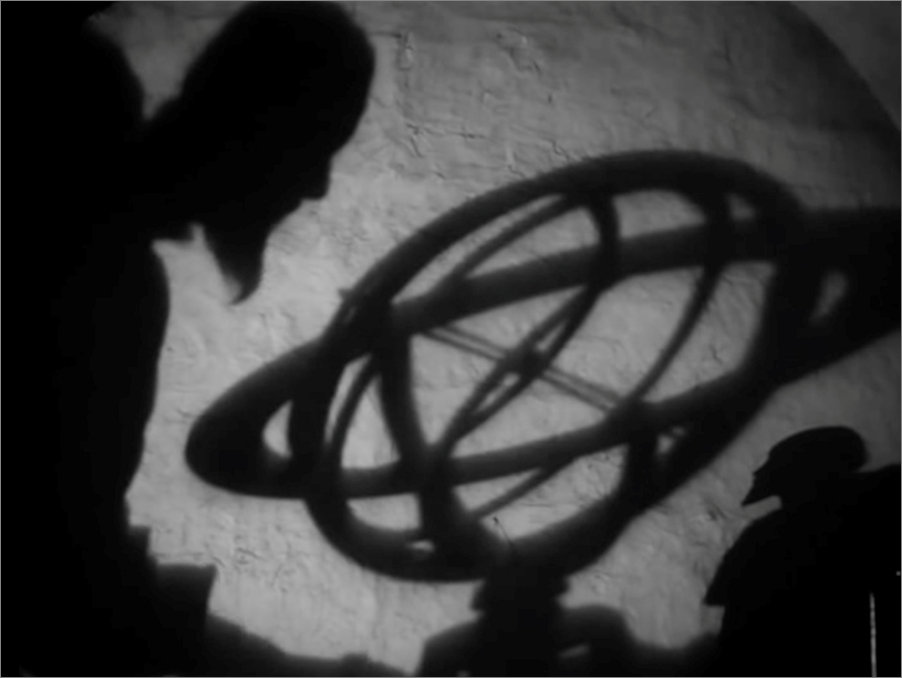
The early part of Ivan’s reign is one of peaceful reforms and modernisation.
This film is full of imagery and the stylised poses or use of shadows is unsurpassed anywhere else! The bottom two images are sourced from melmoth.co and the top image from Senses of Cinema which also provides a lengthy essay worth reading.

I love Lobby Cards! - This one is sourced from Posteritati.com for which may thanks!
'Disgusting thing!' Why Stalin couldn't accept Eisenstein's sequel of 'Ivan the Terrible'
9th January, 2018 by Alexey Timofeychev
The first part of Eisenstein's film received the USSR's highest honor, the Stalin Prize
Sergei Eisenstein's last movie, Ivan the Terrible, was made at Stalin's request, but its two parts had very different fates. The famed film director received the most prestigious state prize for the first part, but was harshly criticized by Stalin for the second, which was quite a dangerous matter at the time. On the eve of Eisenstein's 120th birthday Russia Beyond takes a close look at the little-known story. "…Ivan the Terrible by Eisenstein, the second part. I don't know whether any of you saw it, I have seen it. It is a disgusting thing!" Soviet leader Joseph Stalin said at a Communist Party leadership meeting in August 1946. Less than a year prior the first part of Eisenstein's film received the USSR's highest honor, the Stalin Prize. The Soviet leader originally enjoyed the movie, which is about Russia's first tsar. The film starts off with the early part of Ivan's reign, the period before the ruler became 'terrible' and launched a brutal campaign to eliminate his real and perceived enemies among the nobility. We see how Ivan pledges to make the country great, fighting both internal and external enemies, an agenda which was important after the previous period of political instability. Strong and confident, the Tsar achieves his goals. He defeats the country's traditional external enemy, the Tatars, but at home he faces resistance from the boyars who want to prevent Ivan from expanding his royal authority.
Indecisive Ivan Until this point in the movie, everything was fine for Stalin. The second part, however, shows growing opposition from the boyars, and deals with the most controversial episodes of Ivan's reign – the oprichnina terror campaign against the nobles. Eisenstein failed to present it in a way that suited Stalin's expectations. An avalanche of criticism cascaded down on the director, who supposedly also incorrectly depicted the Tsar's personality.
What was wrong with the description of the medieval Russian ruler, and why was it so important for the Soviet leader? One can find answers in the transcript of the meeting in February 1947 that Stalin had with the director and other Soviet officials. "Tsar Ivan was a great and wise ruler… His wisdom lay in the fact that he stood for national interests and did not let foreigners into the country... Ivan the Terrible was a very cruel person. You can depict him as a cruel man, but you have to show why he had to be cruel. One of the mistakes of Ivan concerned the fact that he did not entirely butcher the five major feudal families. …Then, there would not be troubles later on. .. He should have been more resolute," Stalin said pointing to the fact that Eisenstein's Ivan was "indecisive, resembling Hamlet." According to one high-ranking Soviet official, Andrey Zhdanov, who was also present at the meeting, the director made the Tsar out to be "neurotic." Ku Klux Klan in medieval Russia Besides the Tsar's personality, Eisenstein had a different view of the conflict with the boyars. Stalin saw Ivan's guard regiments (oprichniks), which were formed to fight his opponents, as a "progressive army." "You depict oprichniks as Ku Klux Klan," complained Stalin. There was a rare moment in the conversation when Eisenstein disagreed with the Soviet leader in a manner that could even imply sarcasm. The director replied that while the Klan members wore white hoods, his oprichniks were dressed in black ones. In general, Stalin could not agree with Eisenstein's negative attitude toward Ivan's terror. He insisted that it was a progressive measure that helped to strengthen the country and defend it from feudal princes who aspired to tear it apart.
Stalin and cinema
It's clear that Stalin paid special attention to cinema. "Stalin leaned towards cinema the most [out of other forms of art]. … He liked to take a figure in history that could be useful from the point of view of the contemporary political situation and ideological struggle," said Soviet writer Konstantin Simonov. Stalin did not need the image of a weak, hesitant ruler who suffered psychologically because it had no propaganda value. In the case of Ivan the Terrible's second part, it's often assumed that Stalin did not like how the director depicted the Tsar and his actions because it put his own policies in a negative light. "Everybody who saw the movie drew parallels, and this was of course absolutely unacceptable to Stalin," said Naum Kleiman, a former director of the Cinema Museum in Moscow. Stalin favored the image of a strong ruler, as he was portrayed at the time. Ivan's repressions were also a sensitive topic given the purges in the USSR in the late 1930s, claiming many lives. As far as the film's fate, Eisenstein was told to correct the "errors." He soon died, however, and the film's second part was shown to the public only in 1958, and according to the director's cut. Sourced from : rbth.com
Addendum
Thanks to the remarkably detailed scholarship of Joan Neuberger and Yuri Tsivian, who have both written invaluable monographs about the film and contributed fascinating audiovisual essays to the Criterion DVD editions, we now know that Ivan, far from being any sort of ideological collapse, was in fact Eisenstein’s most courageous gesture, above all in its highly ambivalent and often critical treatment of Stalin. Part I, which was milder overall, may have garnered the Stalin prize, but Part II, whose sexual and stylistic delirium went much further, was banned for a dozen years, following a now legendary February 1947 Kremlin meeting of Eisenstein and his lead actor, Nikolai Cherkasov, with Stalin, Molotov, and Zhdanov. It appears that Eisenstein agreed to make some cosmetic changes but then edited the film to suit himself, and died just afterward—having already vowed in his diary to work himself to death, after apparently being more appalled than pleased by Stalin’s initial endorsement of his project (according to Russian film scholar Leonid Kozlov).
Even if he never got around to shooting more than a few fragments of Part III (now lost, apart from a test), what Eisenstein left behind in the preceding two parts is surely one of the most complexly nuanced works in cinema history, simultaneously celebrating, critiquing, and analyzing Ivan, Stalin, and himself. What struck me most of all watching it this time was its shameless embrace of excess on all these fronts, registering both as a giddy kind of pop art and as a morbid exercise in medieval history. Despite its discarding of Eisenstein’s earlier montage aesthetic, I don’t think he ever made anything else in his career that was more personal or more expressive. Additional source : Criterion
Cast
Nikolai Cherkasov - Ivan the Terrible
Lyudmila Tselikovskaya - Tsarina Anastasia Romanovna
Serafima Birman - Boyarina Efrosinia Staritskaya
Pavel Kadochnikov - Vladimir Andreyevich Staritsky
Mikhail Zharov - Malyuta Skuratov
Amvrosi Buchma - Alexei Basmanov
Mikhail A. Kuznetsov - Fyodor Basmanov
Mikhail Nazvanov - Prince Andrei Kurbsky
Andrei Abrikosov - Boyar Fyodor Kolychev
Vsevolod Pudovkin - Nikola, a simple beggar
Credits
Director - Sergei Eisenstein
Written by - Sergei Eisenstein
Producer - Sergei Eisenstein
Cinematography - Andrei Moskvin
Cinematography - Eduard Tisse
Original music by - Sergei Prokofiev
Lyricist - Vladimir Lugovskoi
Production design - Issac Shpinel
Costume design - Leonid Naumov
Makeup - V. Goryunov
Sound - Vladimir Bogdankevich
Sound - Boris Volsky
Source : Criterion
Page refreshed : 13th July 2021 (G)